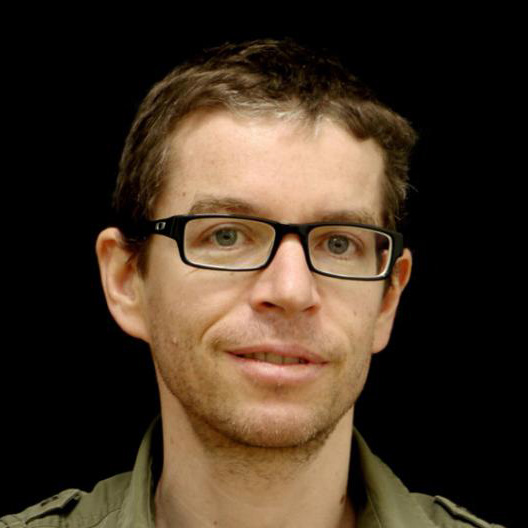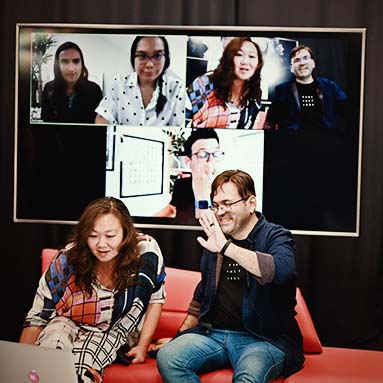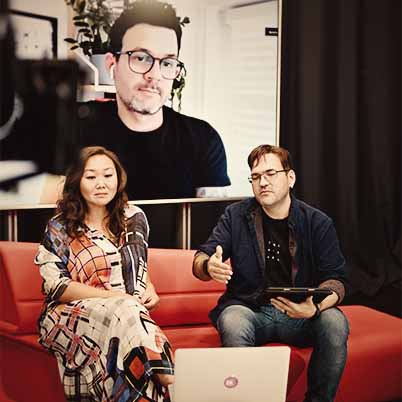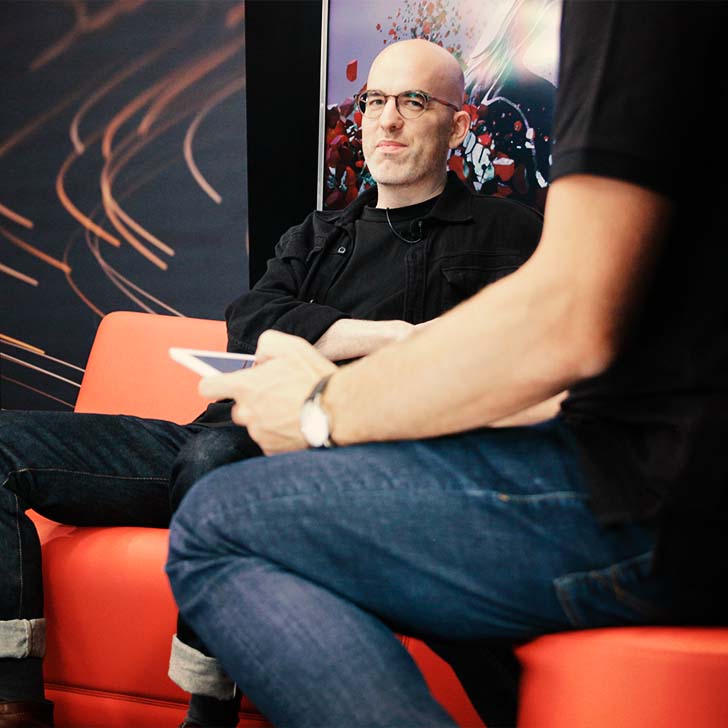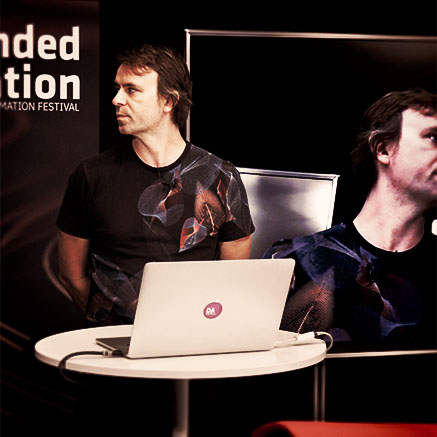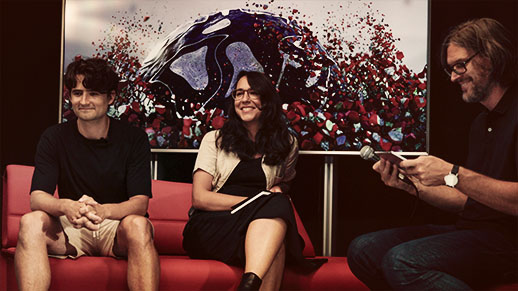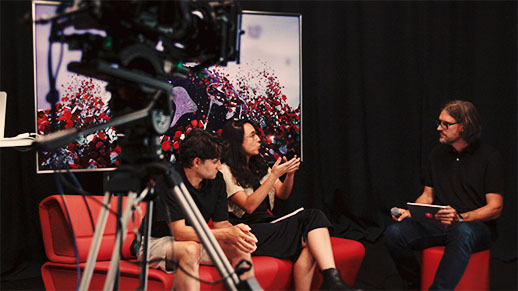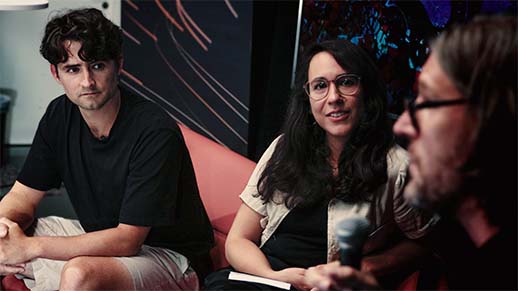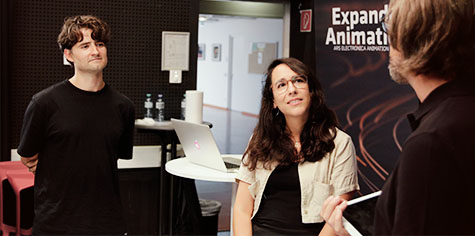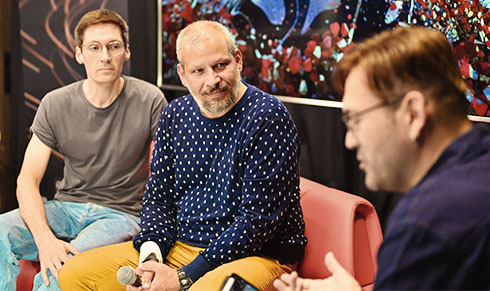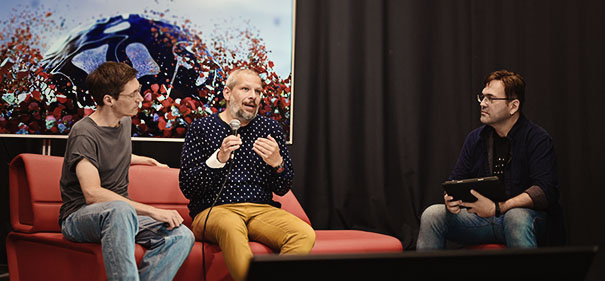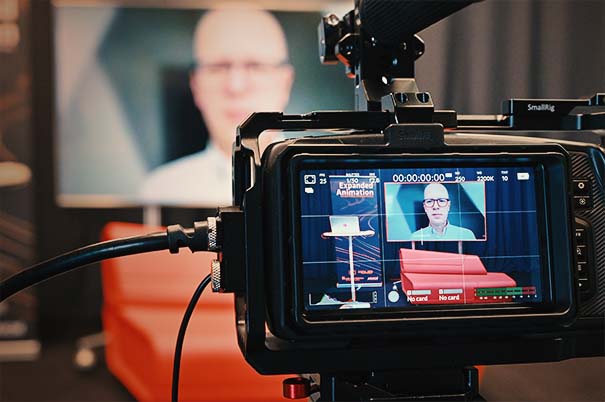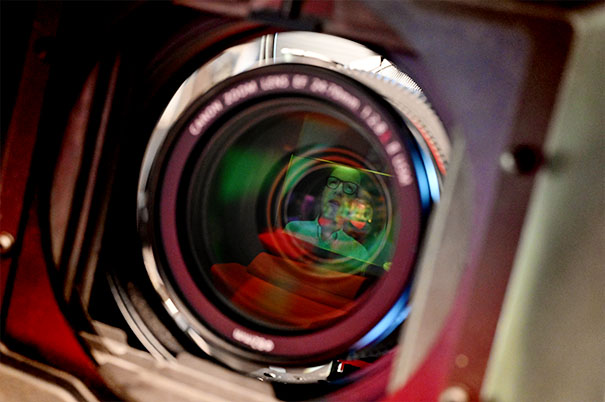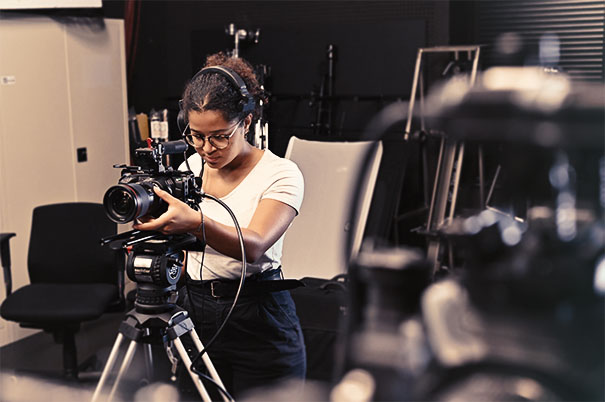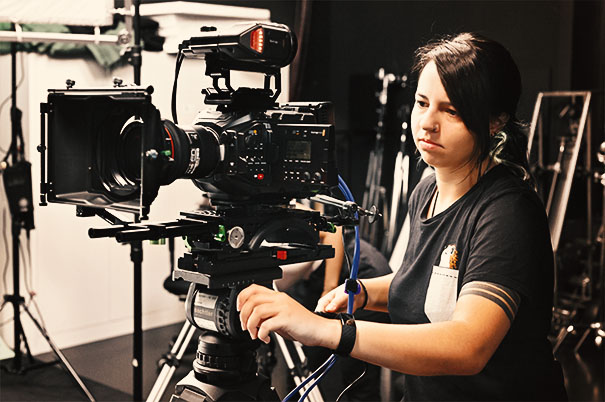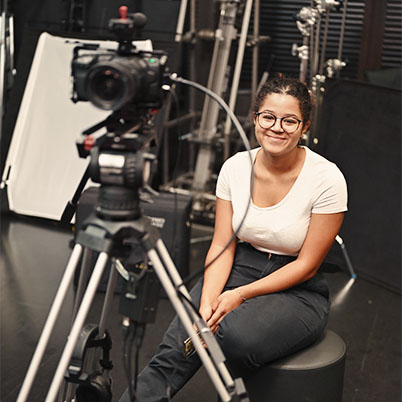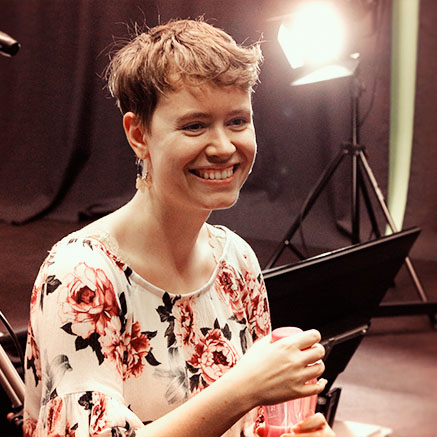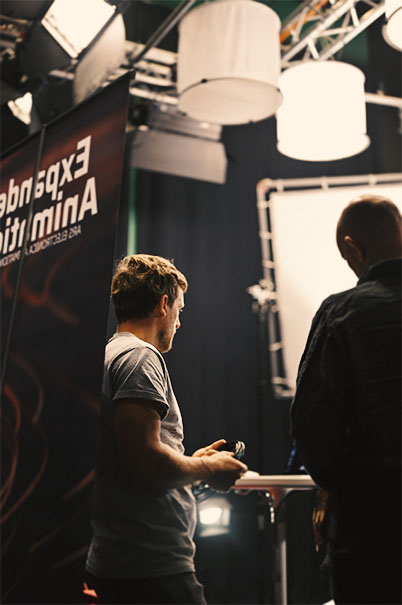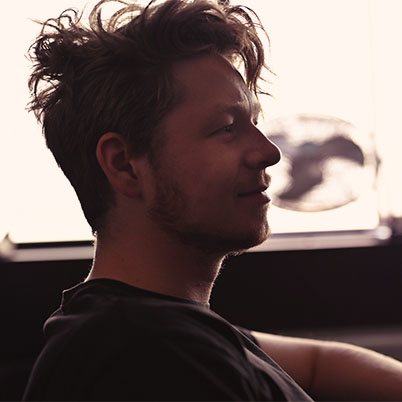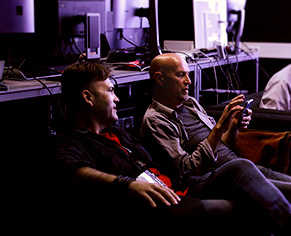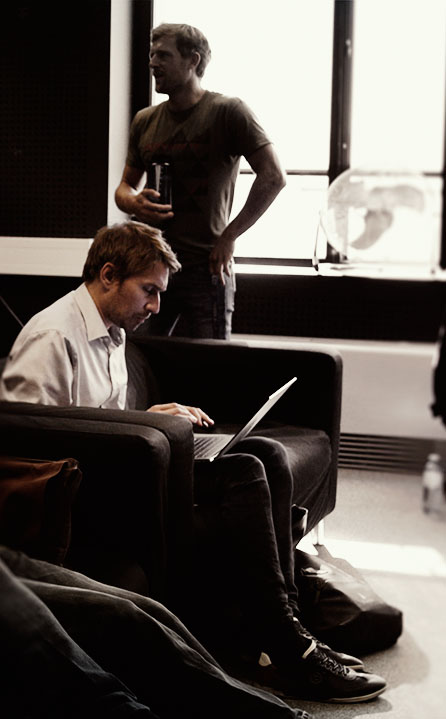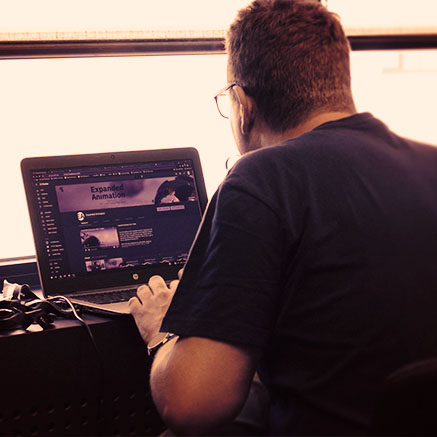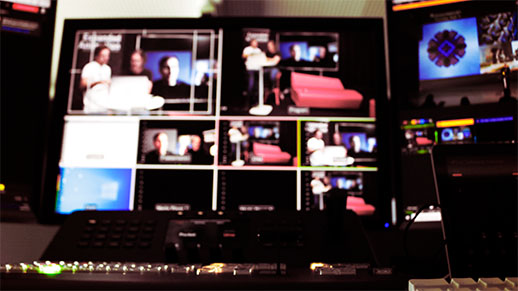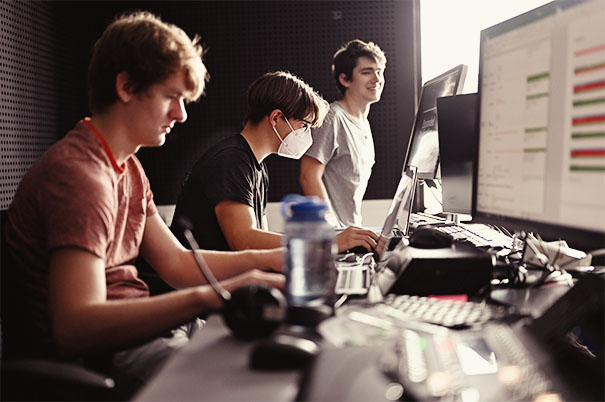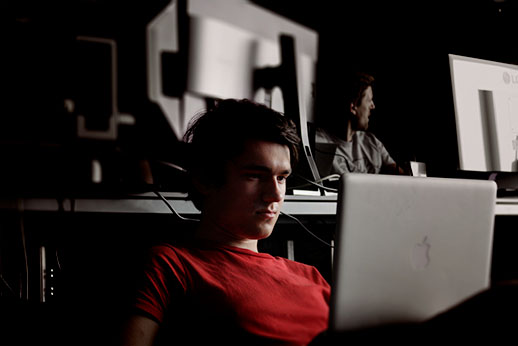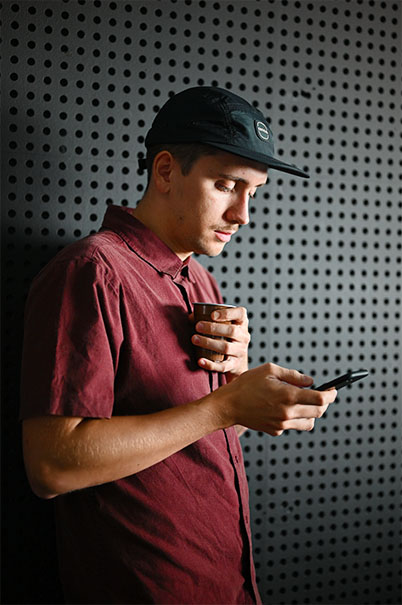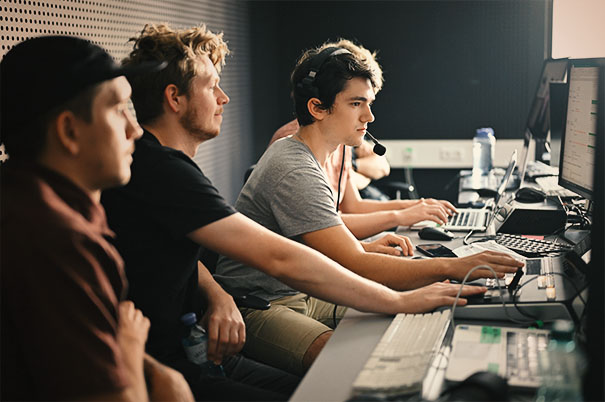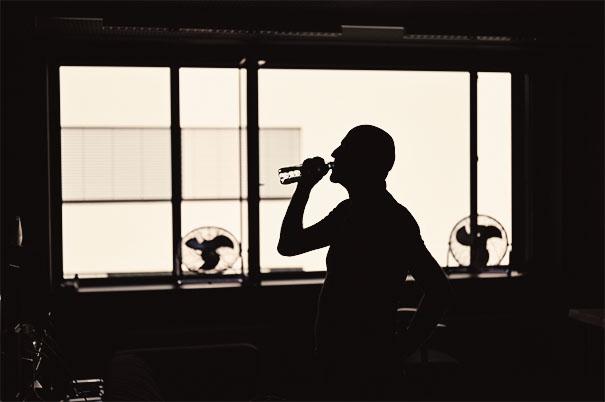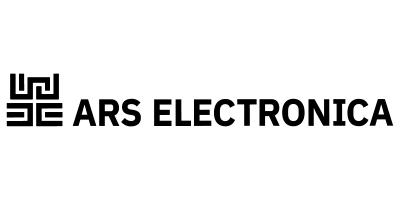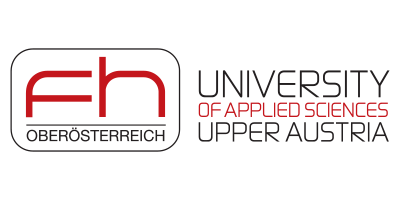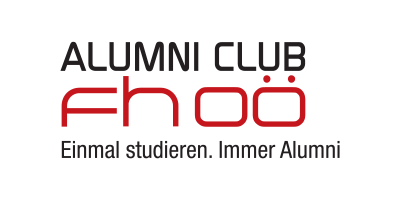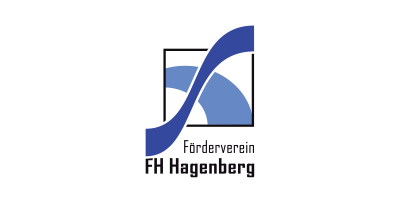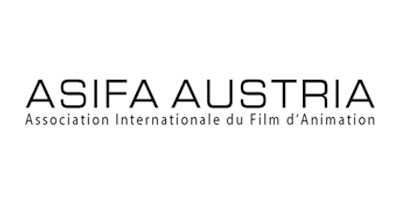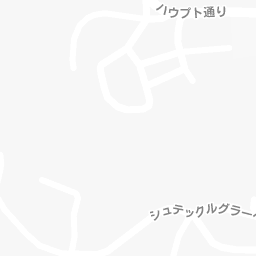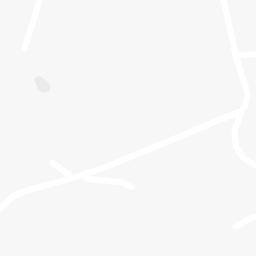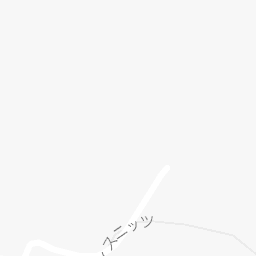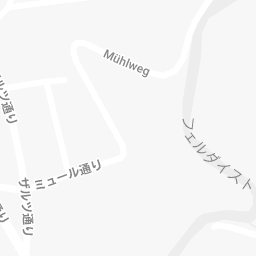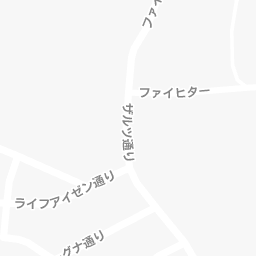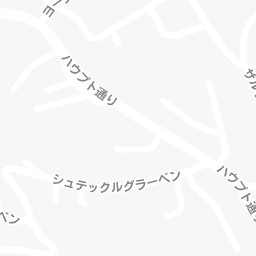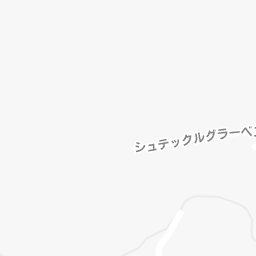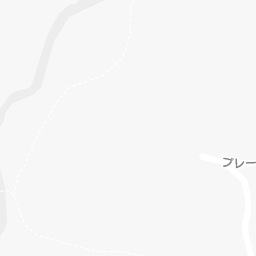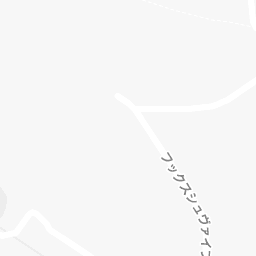This year’s Expanded Animation will take place at the Ars Electronica Center in Linz, Austria.
Join Us
DAYS
HOURS
MINUTES
SECONDS
Expanded Animation 2022
The tenth edition of the Expanded Animation Symposium, organized by the Hagenberg Campus of the University of Applied Sciences Upper Austria and Ars Electronica, will take place from September 9th to 11th as part of the Ars Electronica Festival 2022.
In its ten-year history, the Expanded Animation Symposium has continually examined the vast and constantly evolving field of animation and its myriad connections to other disciplines. Along this journey, the symposium has featured prominent and upcoming people, projects and perspectives that have significantly shaped the current animation landscape. In addition to becoming a regular part of the Ars Electronica Festival, the symposium itself has also continued to expand, developing from an initial one-day event to a three-day affair that includes multiple tracks, exhibitions, performances and even an additional symposium, Synaesthetic Syntax.
After two years of virtual events hosted by the Hagenberg Campus of the University of Applied Sciences Upper Austria, this year’s symposium will return as a physically accessible venue for the first time at the Ars Electronica Center in Linz. Over the course of the three-day event, the speaker panels will feature several international artists, researchers, and developers who will discuss—in a live setting—current processes of change in the expanded field of animation.
SPEAKERS
The speakers for Expanded Animation 2022 are confirmed and we’re proud to introduce them to you.
Prix Forum
Artist Position
Art & Industry
Games & Art
AI & Creativity
Expanded & Hybrid
Synaesthetic Syntax: Gestures of Resistance
ASIFA Austria Forum
PROGRAM
This year’s symposium features eight distinct tracks: the Prix Forum, the panel Artist Position, Art & Industry, Games & Art, AI & Creativity, Expanded & Hybrid, the Synaesthetic Syntax conference, and the ASIFA Austria Forum.
All scheduled times are local Austrian time (Europe/Vienna). Use the dropdown below to switch to a different timezone.
11:00
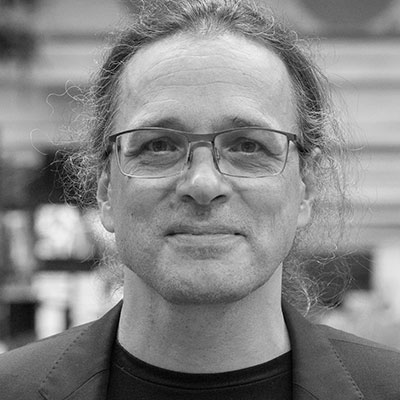
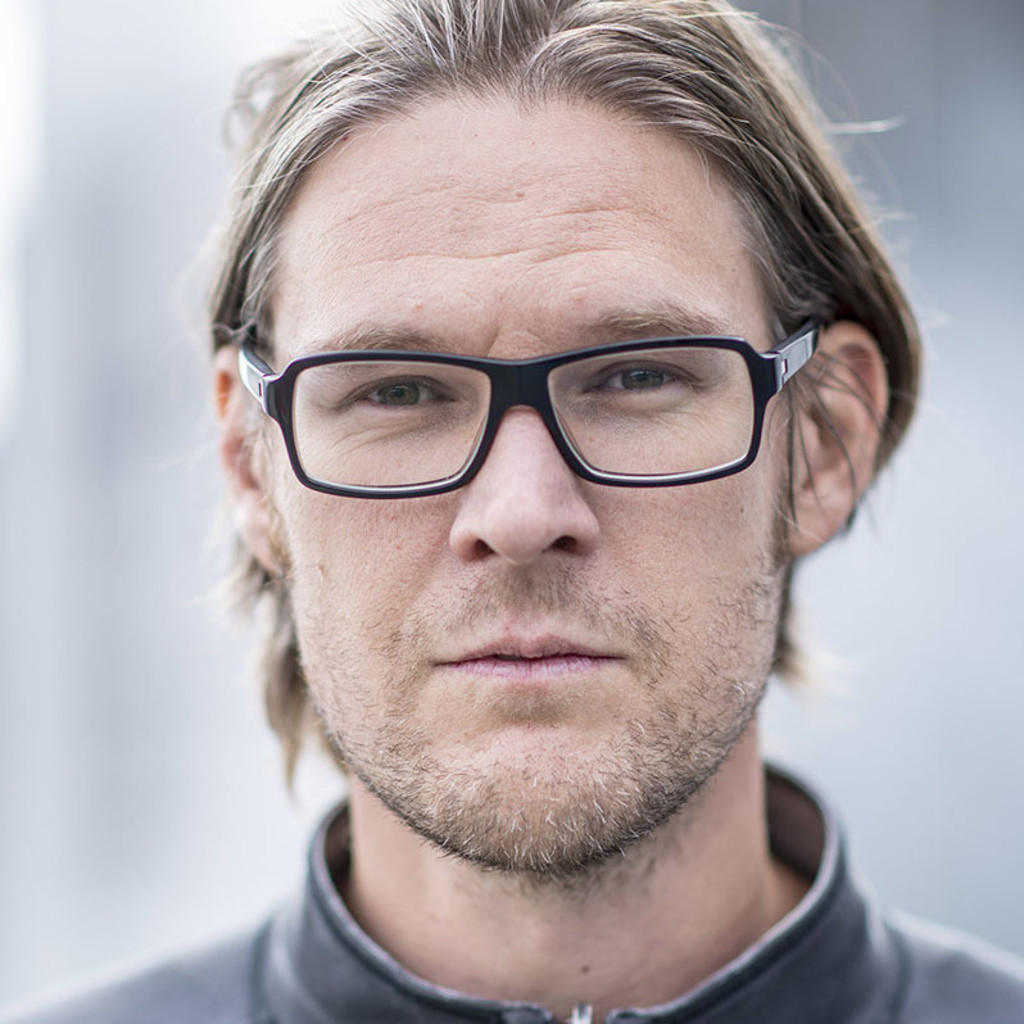
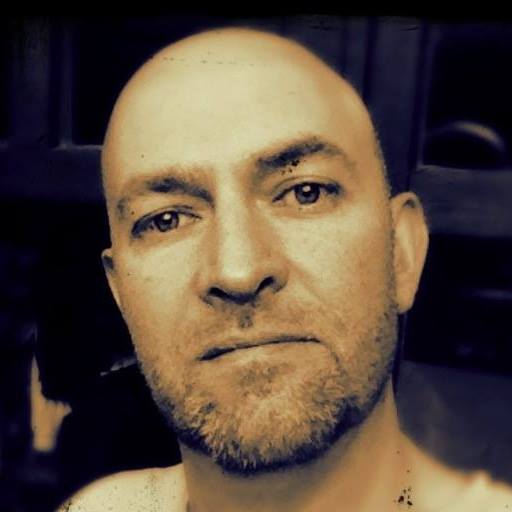
Welcome
The tenth edition of the Expanded Animation Symposium, organized by the Hagenberg Campus of the University of Applied Sciences Upper Austria and Ars Electronica, will take place from September 9th to 11th as part of the Ars Electronica Festival 2022. In its ten-year history, the Expanded Animation Symposium has continually examined the vast and constantly evolving field of animation and its myriad connections to other disciplines. Along this journey, the symposium has featured prominent and upcoming people, projects and perspectives that have significantly shaped the current animation landscape. In addition to becoming a regular part of the Ars Electronica Festival, the symposium itself has also continued to expand, developing from an initial one-day event to a three-day affair that includes multiple tracks, exhibitions, performances and even an additional symposium, Synaesthetic Syntax. After two years of virtual events hosted by the Hagenberg Campus of the University of Applied Sciences Upper Austria, this year’s symposium will return as a physically accessible venue for the first time at the Ars Electronica Center in Linz. Over the course of the three-day event, the speaker panels will feature several international artists, researchers, and developers who will discuss—in a live setting—current processes of change in the expanded field of animation.
15 min
Gerfried Stocker
Gerfried Stocker (AT) is a media artist and an engineer for communication technology and has been artistic director and co-CEO of Ars Electronica since 1995. In 1995/96 he developed the groundbreaking exhibition strategies of the Ars Electronica Center with a small team of artists and technicians and was responsible for the setup and establishment of […]
https://ars.electronica.art/Juergen Hagler
Juergen Hagler (AT) studied art education, experimental visual design, and cultural studies at the University for Art and Design in Linz, Austria. He currently works as a professor of Computer Animation and Animation Studies in the Digital Media department at the Hagenberg Campus of the University of Applied Sciences Upper Austria. Since 2014 he a […]
https://research.fh-ooe.at/de/staff/215Alexander Wilhelm
Alexander Wilhelm (AT) studied Industrial and Interaction Design at the UFG Linz and the ZHDK, Zurich. With his company “The Visioneers,” he worked for clients like Audi and BMW for more than a decade in the field of interaction design and visualisation. 2011 he became a professor for design and animation at the University of […]
https://research.fh-ooe.at/de/staff/21048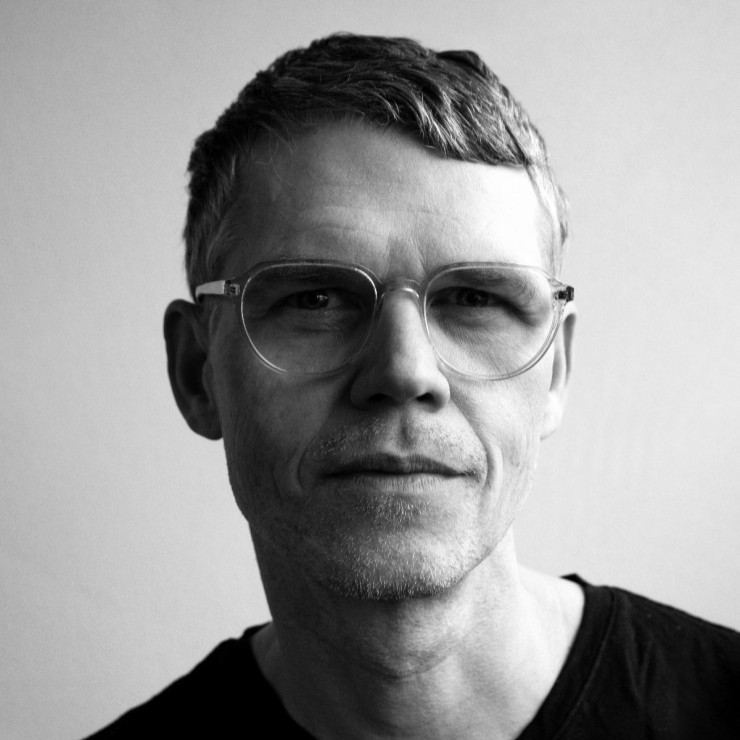
Art & Industry – Martin Retschitzegger: Navigating Hybrid Workflows for Moving Images in Space
As part of his collaborative contribution of real-time visuals for the un-ctrl performance at the Deep Space 8k during this year’s Ars Electronica Festival, Martin will speak about his experiences and perspectives on the ever changing landscape of creating moving images for physical and virtual spaces. As creative director and technological lead at the Berlin-based studio m box, Martin has co-created countless linear, interactive, generative and immersive projects for small screens to large-format spatial experiences. m box started originally as a pure 3D animation and motion design company, but quickly evolved through various artistic and technical challenges to a hybrid studio that also strongly focuses on the creation and programming of interactive and generative installations and visuals. One of Martin’s key goals is to bring the performative and creative possibilities of real-time tools to non-coding artists and, by doing so, help to blur the still existing boundaries between linear and interactive workflows. This has led to the development of the in-house m ctrl real-time performance framework, which will be used for the performance and also demonstrated during the talk.
35 min
Martin Retschitzegger
Originally starting out as a 3D animator, techno producer and club promoter in his native Austria, Martin (AT) is now the creative director and co-founder of the Berlin-based studio m box. He passionately works in all fields of moving images, interactive, immersive and spatial media experiences. Martin collaborates with artists, agencies and clients in various […]
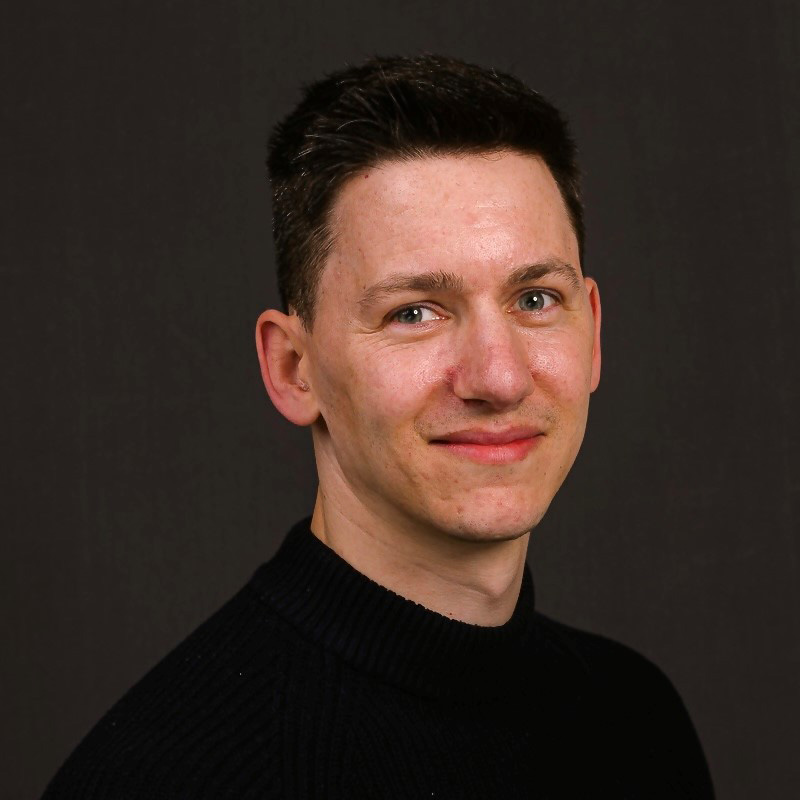
Art & Industry – Paul Pammesberger: The Importance of Visual Consistency in Stylized Animation
In a post-spiderverse world, where high budget projects delve into more stylized and conceptual aesthetics, a holistic approach to all visual elements is necessary to create a fully realized experience. Optical effects and traditional animation techniques have to be reconsidered in tandem with render and lighting elements. The visual language of modern-day animation is going through an interesting period with multiple projects pushing the creative boundaries. More expressive art styles are finally becoming a tool for storytelling and expression in mainstream animated media. One of the original goals of CG was to emulate the real world as closely as possible. This is starting to become an obstacle for more stylized media. Traditional processes and concepts require a fundamental redesign to allow artists to regain ownership of the medium and expand the artistic possibilities of storytelling in a digital world.
35 min
Paul Pammesberger
Paul (AT/CA) fell in love with computer graphics and animation early on while being a teenager. Through his studies at the University of Applied Sciences Upper Austria Campus Hagenberg he was able to develop his skills further. After finishing his masters degree, the Vienna based boutique animation studio arx anima hired Paul full time as […]
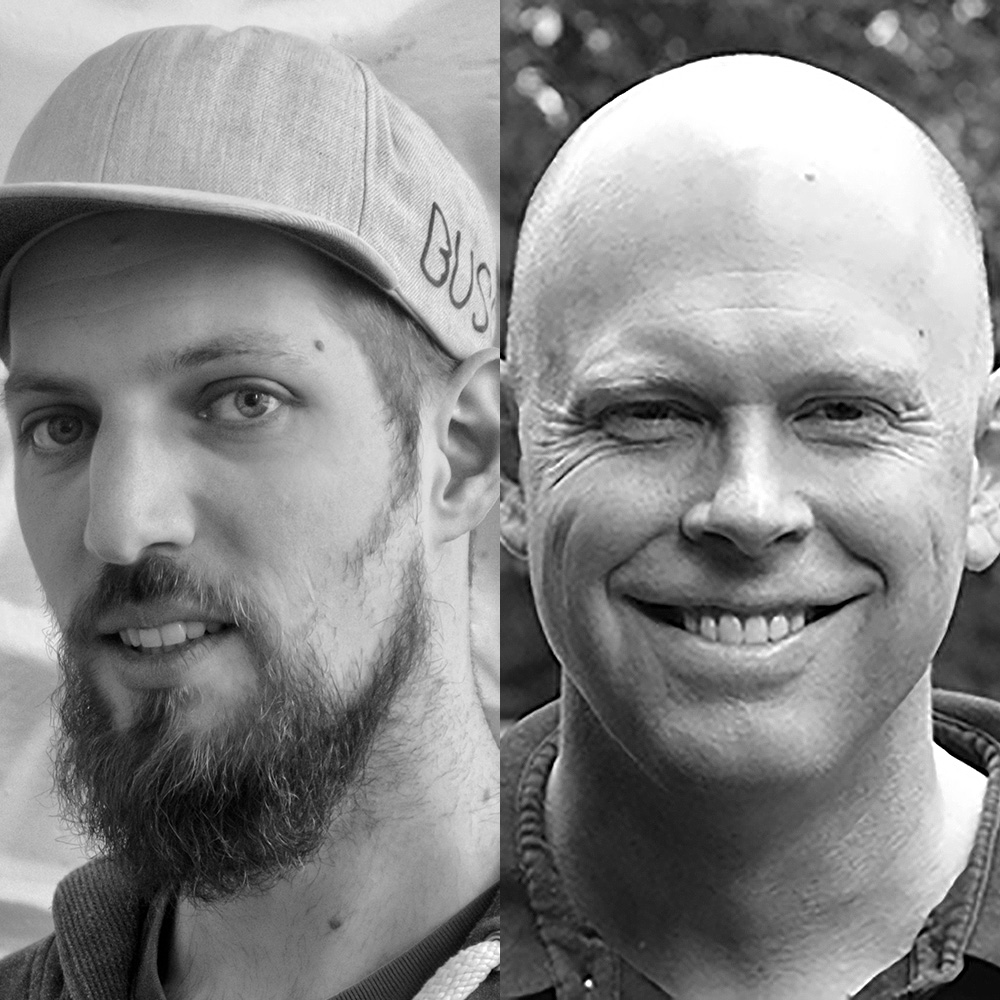
Art & Industry – Causa Creations: Art, education and immersive entertainment – Holy Fire
Holy Fire is a poetic documentary VR experience that focuses on the desires flaring up in the history of nuclear energy. In this talk, we will show materials from the pilot that is currently in development and how we are attempting to create a unique visual language that works within the tight constraints of mobile VR devices. Holy Fire follows a very non-traditional and interdisciplinary approach, exploring how artistic practices from theater, media art and animation can be used (or not) when working on an artistically minded VR experience. Holy Fire is a project by Causa Creations, a boutique game development studio located in Vienna, Austria that specializes in the creation of immersive experiences and games, often with a socio-political background. Causa Creations aims to produce a high quality artistic VR piece to be experienced around the globe. We will provide a short overview of the company, its history and projects and then dive into our idiosyncratic tools and procedures for XR projects.
35 min
Ben Wahl & Brian Main
Ben (AT) is a multimedia artist and game developer with emphasis on 3D Art and VR experiences. They finished their Master of Arts in time based media at the University of Art and Design Linz with distinction in 2019 after finishing a more technical Bachelor of Science in media technology and design at the University […]
https://www.causacreations.net/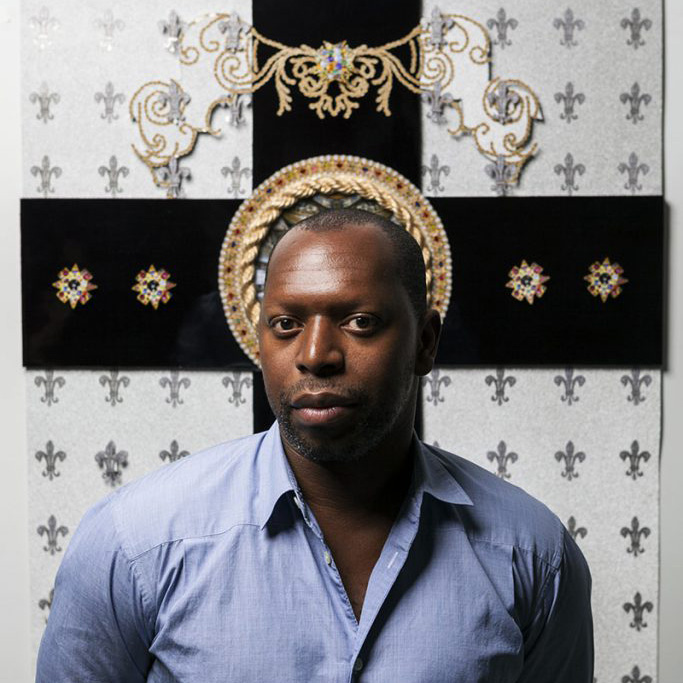
Keynote: Rashaad Newsome – Being (Golden Nica 2022)
Being (2022) is a nonbinary, non-race AI created by combining animation game engines, scripted responses, generative grammars and unique machine-learning models. It plays multiple roles, leading participatory workshops that teach decolonization, and in the evenings, it explores the evolution of vogue drawing parallels between dance and Black American Queer experience.
60 min
Rashaad Newsome
Rashaad Newsome (US) lives and works in Oakland, CA. Their work blends several practices, including collage, sculpture, film, video, animation, photography, music, software engineering, community organizing, and performance, to create a divergent field that rejects classification. Using the diasporic traditions of improvisation, he pulls from the world of advertising, the internet, Art History, and Black […]
https://rashaadnewsome.com/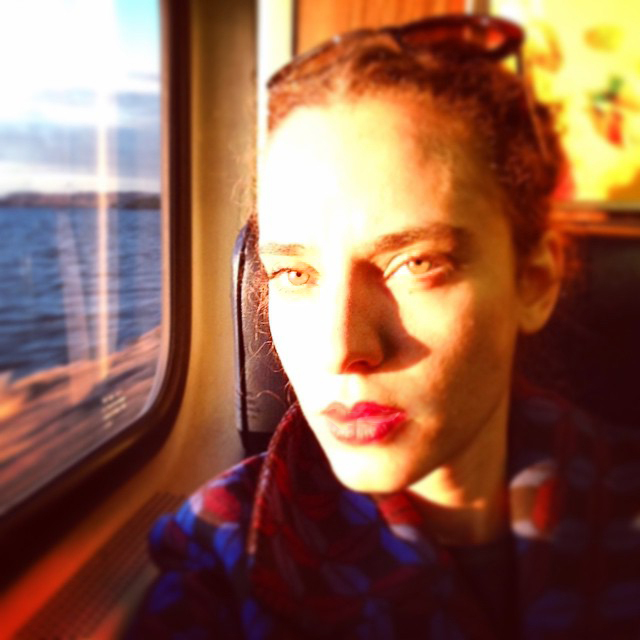
Artist Position – Alex Verhaest: Thinking like strangers – collective imagination of Eutopia
In March 2020, the world came to a screeching halt. We were forced to pause, look around us and reconsider: where exactly were we heading? What were we looking for? A flurry of articles appeared about aspirational new world views. And depending on the type of Facebook friends you had, the alternatives presented were either dire or hopeful. Some wanted to go back to the Arcadian cliché of the suburbia of the fifties, while others pined for the now closed hedonist hub of the city. “Like” or "don’t like", there was only one certainty; Change was coming, for better or worse. How to think about Utopia? How to think about Dystopia? Where do our ideas about this come from? How had people thought about Utopia before this apparent apocalypse? Are we ever right? In Eutopia Unbound, Sofie Verraest describes how the idea of “a good place” and the description of it within famous, infamous or even less read books, ensures that stereotypical patterns of the imagination are activated. Those patterns circulate in a culture and are perpetuated through movies and art and plays and music that move us and annoy us and thus those patterns sneakily nestle themselves deeply into our collective subconscious. The things we keep and collect in a culture are the means by which we shape our past, future and present, for better or for worse. These artefacts shape the framework by which we define our likes and dislikes around a more complex reality. They shape the lens through which we see the state of the world. The talk will investigate how Sofie Verraest’s Doctoral thesis Eutopia Unbound formed the basis for my video game ad hominem.
45 min
Alex Verhaest
Alex Verhaest (BE) studied at Luca School of arts, where she is currently teaching. Her work has been exhibited at numerous institutions (ZKM karlruhe, HKW Berlin, Bozar). She won the New Face Award at the Japan Media arts Festival and her work has been awarded with the prestigious 2015 Ars Electronica Golden Nica. In 2019 […]
http://www.alexverhaest.com/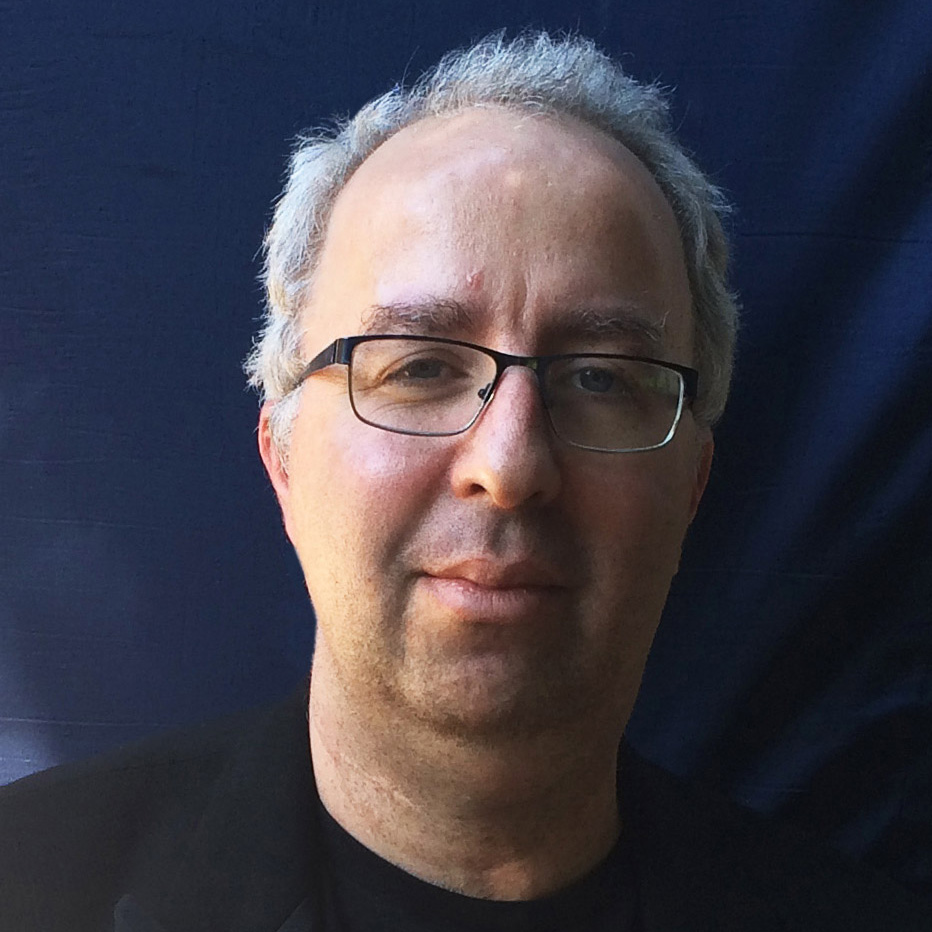
Artist Position – Yoni Goodman: The road to Anne Frank
Yoni Goodman, Director of animation for Ari Folman’s Waltz with Bashir (2008), The Congress (2013) and Where is Anne Frank (2021) will discuss (and mostly show) the complex process of this 8 year production, from development to the final animation production which consisted of 15 animation studio sand about 300 animators worldwide.
45 min
Yoni Goodman
born 1976. Began his career as an illustrator and designer for two major Israeli newspapers. While studying in the department of Visual Communication at the Bezalel Academy of Art and Design, Jerusalem, Yoni (IL) fell in love with animation and hasn’t stopped making it since. After graduation in 2002 he worked as a freelance animator […]
https://www.yonigoodman.co.il/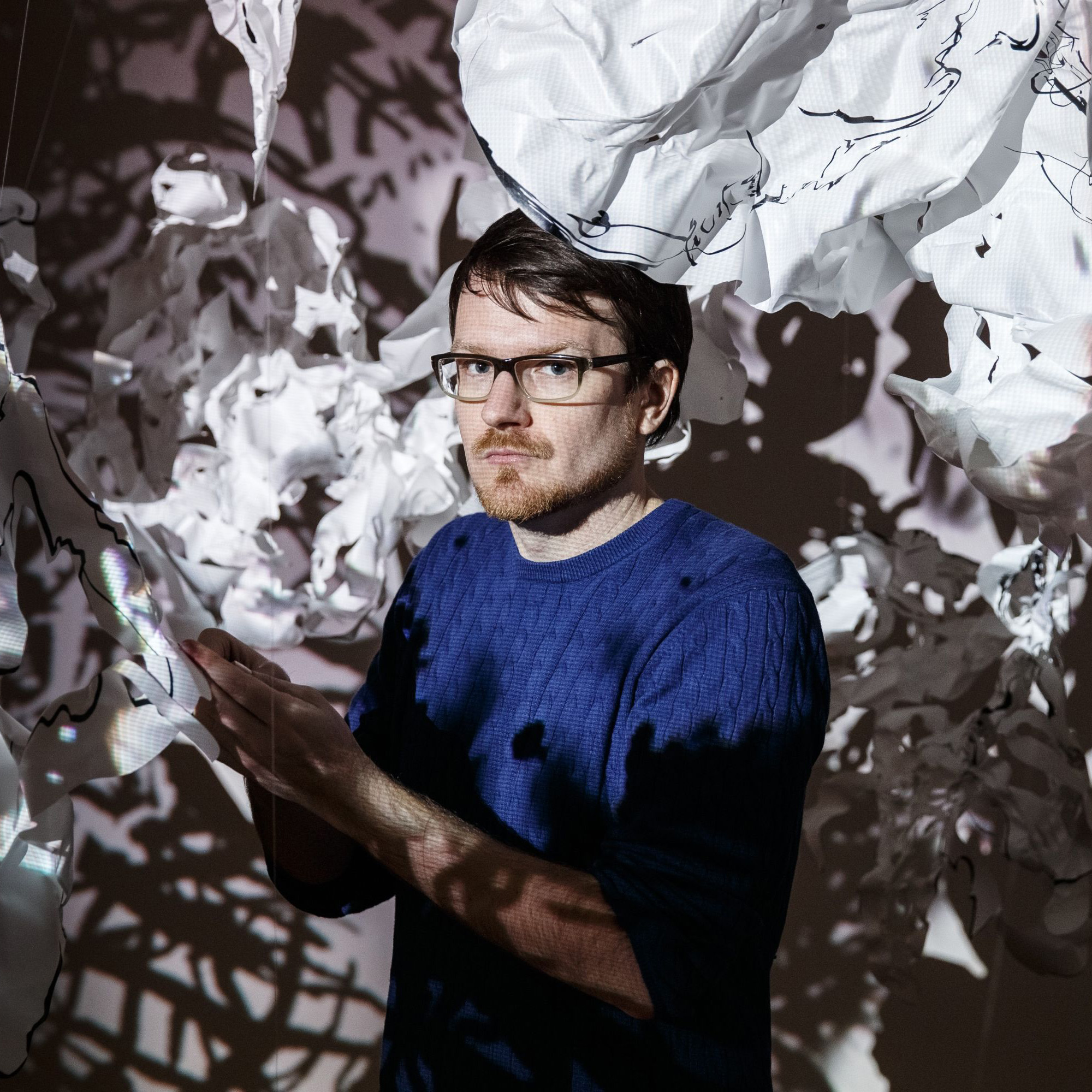
Artist Position – Robert Seidel: Image Making Fatigue
The transfer of the “moving image” into physical space has been explored in many ways in recent years. Sculptures, architectures and even natural projection surfaces have been temporarily “over-painted” with projections, lights or lasers. But given the new advances in machine learning, there may be a kind of oversaturation or even rigor mortis when the moving image becomes the full part of the technical tool chain. In tech companies, universities and artists’ studios, machines work through and learn the history of mankind. Copyright is dissolving; the distinction between original, imitation, or inferior reproduction is eroding. No origin, no responsibility, no clear direction – just a primordial soup that can be shaped into any form without challenging knowledge systems and hierarchies. In this silent but radical restructuring of entire industries, the artist becomes the template of a future digitally assembled from a multitude of fragments of the past. This artist talk addresses some of the implications of this singularity, in which history collapses to a single point in the present, and in which easy access to an infinite reworking of iconography might override the desire for a phenomenological experience.
45 min
Robert Seidel
The works of Berlin-based artist Robert Seidel (*1977, DE) have been shown in numerous international festivals, as well as at galleries and museums such as the Palais des Beaux-Arts Lille, ZKM Karlsruhe, Art Center Nabi Seoul, Young Projects Los Angeles, Museum of Image and Sound São Paulo and MOCA Taipei. In his work ranging from […]
http://www.robertseidel.com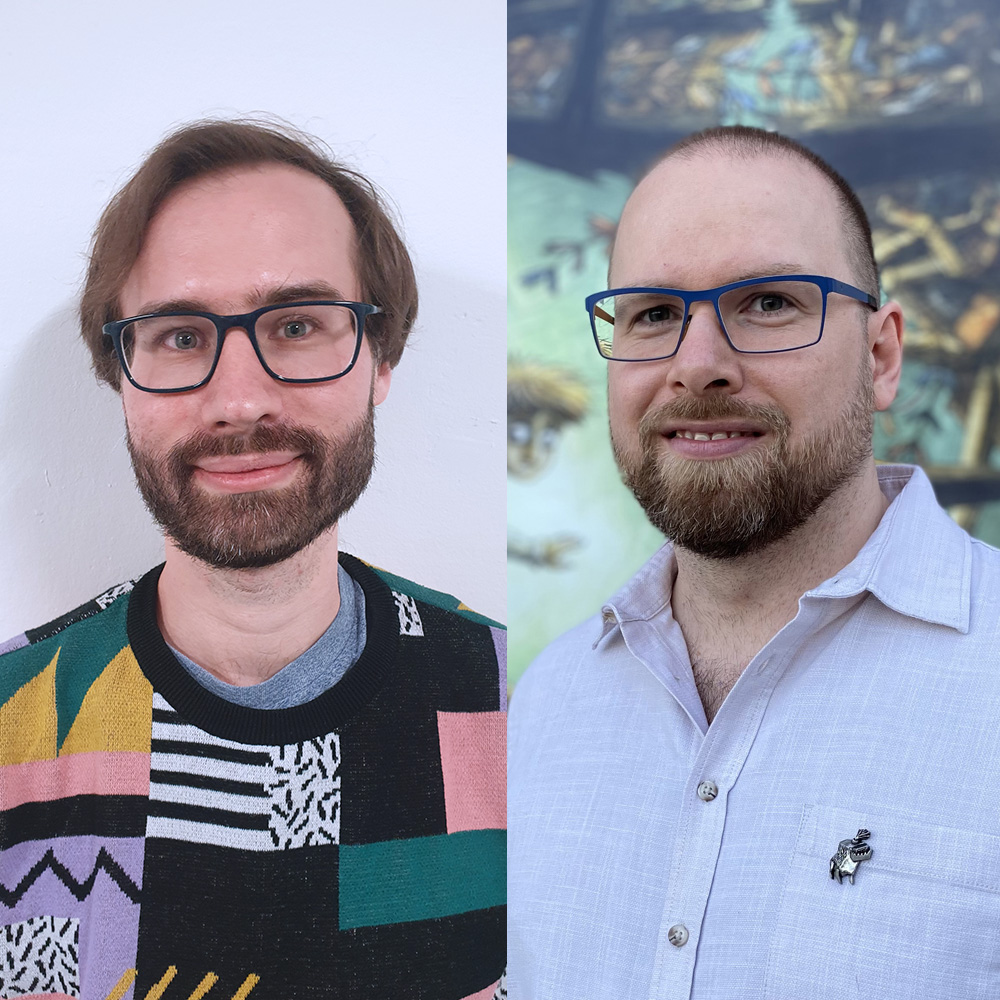
ASIFA Austria Forum – Amanita Design: The Art of Creaks
Artists and designers Radim Jurda and Jan Chlup will guide you through the process of making Amanita Design's video game Creaks, released in 2020. The talk will offer insight into how the authors developed the visual style that originated from their experience and interest in traditional art techniques. You will also learn about their approach to game design, technical solutions, and challenges they have encountered along the way while creating the surreal atmospheric world filled with puzzles.
40 min
Jan Chlup & Radim Jurda
Jan Chlup (CZ) is a visual artist and designer interested in painting, new media, and games. He is a co-author of the video game Creaks (Amanita Design). In his art practice, he uses technology and other media to expand the medium of classical painting. He was born in 1986. In 2011 obtained a master’s degree […]
https://www.amanita-design.net/
ASIFA Austria Forum – Michelle Kranot: Expanded Animation with a Focus on Collaborative Processes
By testing the frontiers of immersive art and moving images, and activating participation in location-based XR experiences, we are compelled to ask how the medium is changing the way we tell a story, and how animation is used to both excite and provoke. While much research on immersive storytelling focuses on theories and on audience experiences, as researchers at The Animation Workshop at the VIA University College Research & Development Department, our focus is on an investigation of the story design process through collaboration and shared experiences. The presentation will outline key case studies: from Nothing Happens (2017), Songbird (2018), The Hangman at Home (2021) and We Are at Home (2022), to the most current work-in-progress.
40 min
Michelle Kranot
Michelle Kranot (IL/DK) is a multimedia artist based in Denmark. She has been working with Uri Kranot as a duo for 20 years. The Kranots gained recognition with films such as Black Tape, Hollow Land, How Long not long, Nothing Happens, Songbird and most recently, the multimedia work The Hangman at Home. Together, the Kranots are the founders of TinDrum, a […]
https://tindrum.dk/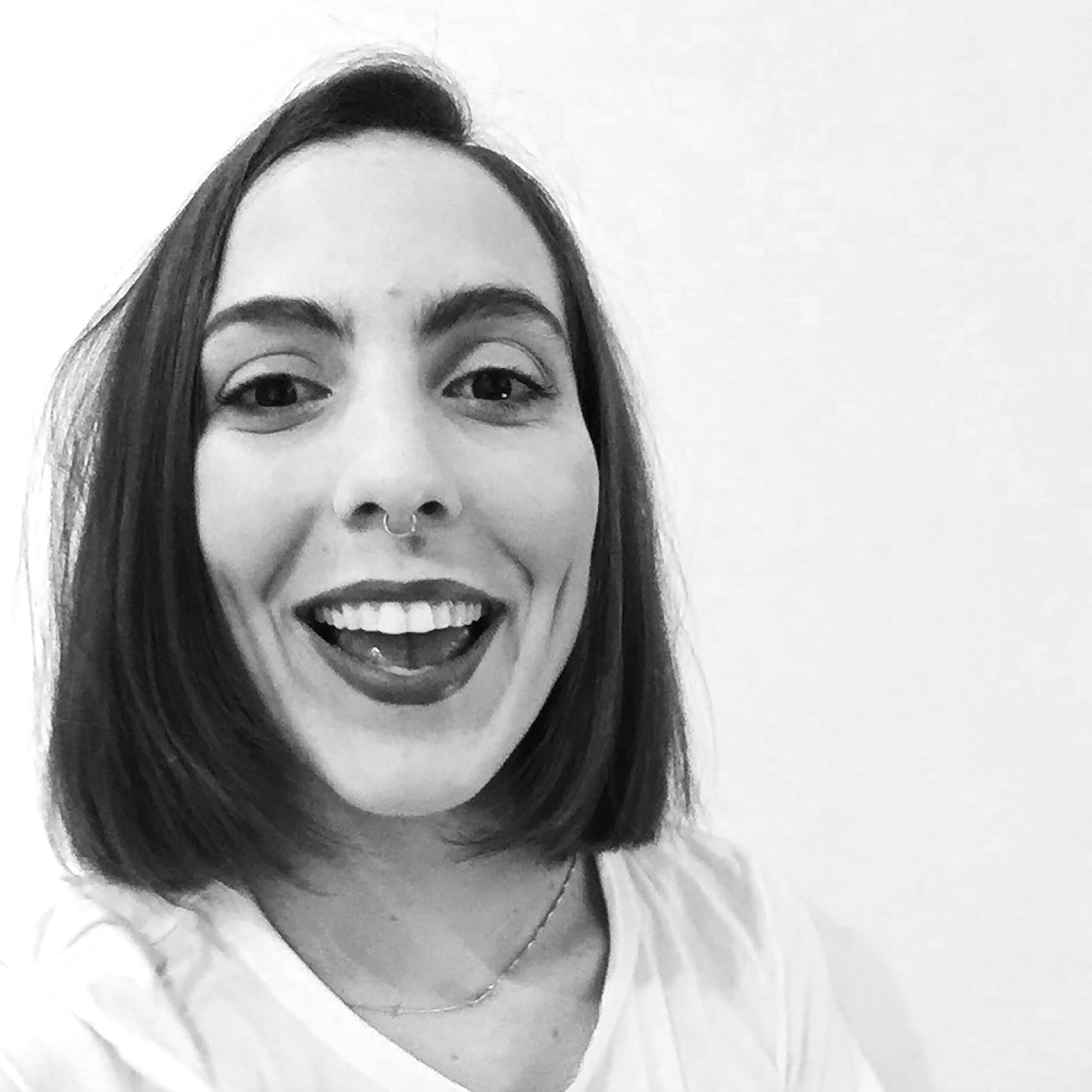
ASIFA Austria Forum – Martina Scarpelli: I JUST WANTED TO DRAW
From 2D animated films to real-time VR theater, VR concerts and animated operas. This talk will discuss my journey from a VR skeptic to thinking metaverses. I will go through some of my works, reveal some of the threads that have always been there and talk about how technology slowly sneaked into my art practice.
40 min
Martina Scarpelli
Martina Scarpelli (*1988, IT/DK) is an Italian director and producer based in Denmark, with a bachelor in Fine Art from “Academy of Brera” in Milano, and a bachelor in Animation from “Experimental Cinematography Center” in Turin. She works as animation director, creative director and most recently as a producer pushing for projects that are sexy, […]
https://martinascarpelli.com/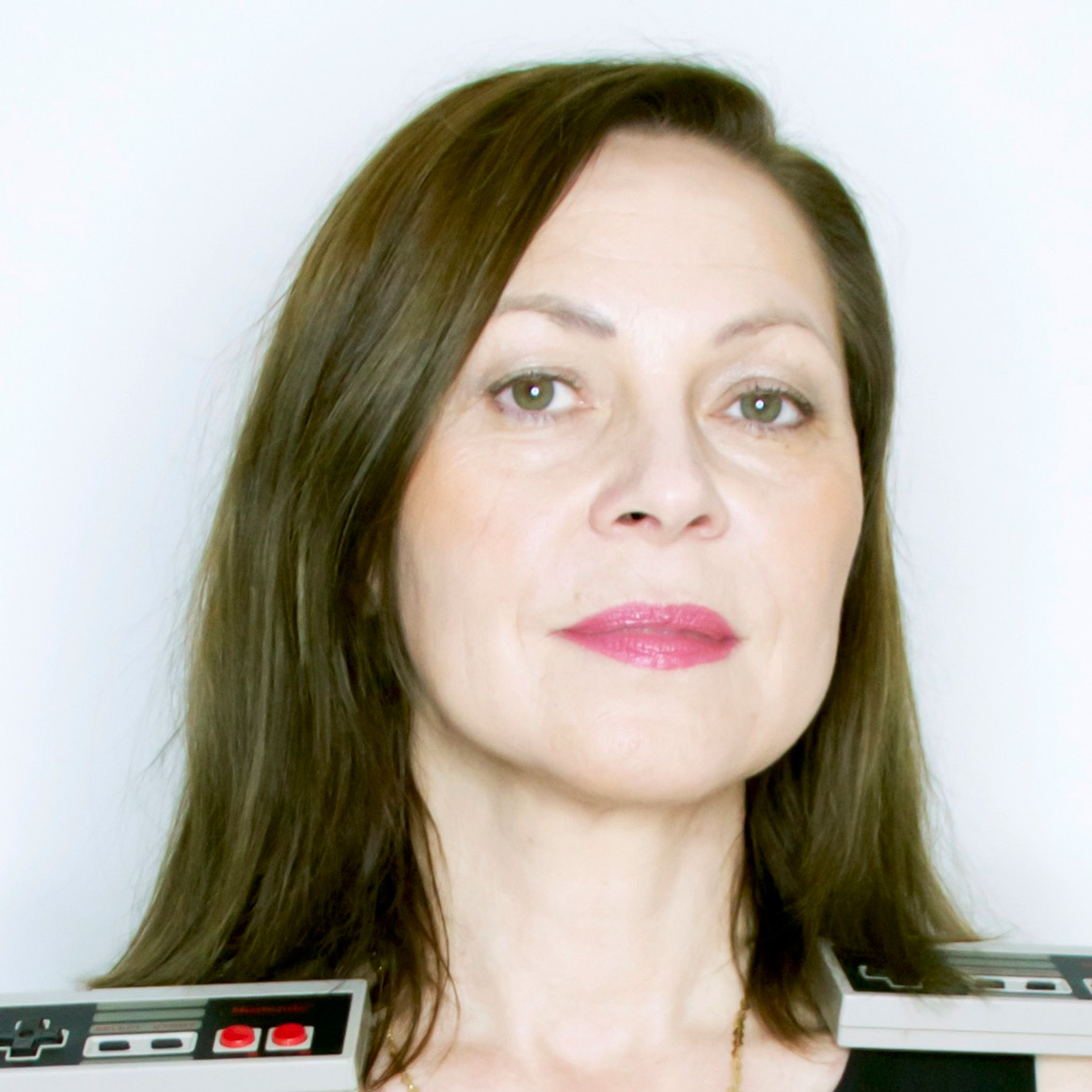
Games & Art – Margarete Jahrmann: Hybrid Ludic Assemblages
The concept of assemblage allows the connection of art, scientific approaches, and socially relevant action. In hybrid game assemblages, in prototypes of Experimental Game Cultures, we focus on the conscious change of established dynamics (of world) of the game – in ludic arrangements between human and non-human actants. The goal in Ludic Art is a critical reflection on the social impact of games and at the same time the prototypical development of innovative game concepts and approaches. And the Expanded narrtion in “anim/ation” – belebte Materie und Spiel – artistic play is the experimental testing and subjective experience of possibilities of the world. The Ludic as a participatory process can show us new forms of future society, politics, and empathy. By transforming systems of rules, ambiguity as a quality in play, a new understanding of the global challenges of our time can emerge. In the Neuromatic Game Art Research lab we exemplarily develop experimental hybrid (not expanded – but deep!) animations with neurointerfaces as source and constant feedbacktool tool/toy. Neuromatic Brainwave Broadcast channel. We aim to introduce Game Changer Games!
45 min
Margarete Jahrmann
Margarete Jahrmann (AT), is a ludic artist and media theorist, full university professor and head of the new department for Experimental Game Cultures at the University of Applied Arts Vienna. She leads the artistic research projects Neuromatic Game Art. Critical Play with Neurointerfaces (FWF/PEEK) and “Biological Interfaces, Ludic Cultures and Non–human Agencies. Games of/in/with/beyond Life“. […]
https://www.margaretejahrmann.net/%20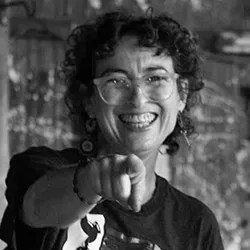
Games & Art – Isabelle Arvers: Re-occupy the Digital Space
We are currently experiencing a counter-attack of minorities that is paving the way to a reappropriation of the image, of representation and of identities. It can be seen as a counter to the “screen” globalization of the globalized imaginary. This decolonization of the imaginary invites a new generation of game designers and digital creators to play with multiple realities and to question other cosmologies and cosmogonies, resulting in a mixture of the supernatural and everyday life; a fantasy, a science fiction that is different from the one linked to a notion of utilitarian progression, efficiency, cleanliness, and artificial materials. This decolonized imaginary can be expressed through counter gaming by using games as a tool to criticize games themselves and to raise awareness on post-colonial, political and social issues. Thus, awareness can be raised on environmental issues along with the green gaming movement, with the development of technologies that are no longer based solely on power and energy consumption. Video games can also be used as a tool for disalienation, for the rehabilitation of history – not the history of the winner – but the stories of those who experienced the events and lived to tell them.
45 min
Isabelle Arvers
Isabelle Arvers (FR) is a French artist and curator whose research focuses on the interaction between art and video games. For the past twenty years, she has been investigating the artistic, ethical, and critical implications of digital gaming. Her work explores the creative potential of hacking games through machinima and games as a new medium […]
https://www.isabellearvers.com/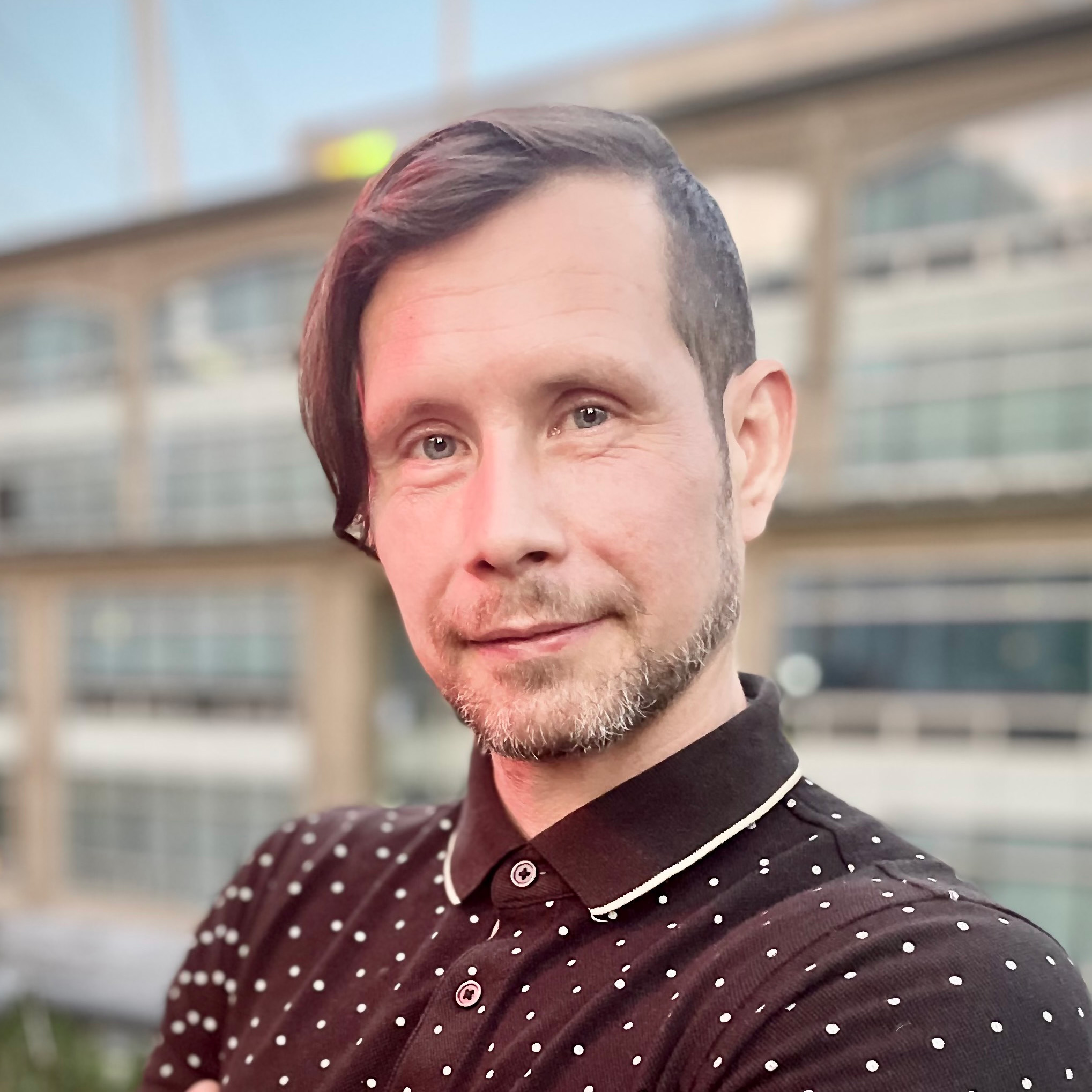
AI & Creativity – Philippe Pasquier: Creative AI and Co-creation: Opportunities and Challenges
Creative AI is the scientific field that studies the partial or complete automation of creative tasks. Be it through the augmentation of existing creative software or through embedded real-time generation, these algorithms have a growing impact on creative practices. We will discuss the implications of such developments through a series of examples of systems developed at the Metacreation Lab in the fields of movement computing, affective computing, generative animation and moving images. From computer-assisted choreography to skeleton animation, from neural film to automatic VJing, we will discuss industrial deployments and artistic applications along with the ethical implications of these systems. Away from the fear of strong, sentient AI, taking over the world, what are the real implications for students, educators and professionals regarding these ongoing developments? What new creative processes are emerging, and how can one prepare for these transformations?
45 min
Philippe Pasquier
Philippe Pasquier (CA) is a scientist specializing in artificial intelligence, a multidisciplinary media artist, an educator, and a community builder. He is a professor at Simon Fraser University’s School for Interactive Arts and Technology in Vancouver, Canada, where he leads the Metacreation Lab. Pursuing a research-creation program, his contributions bridge theoretical research on generative systems […]
https://philippepasquier.com/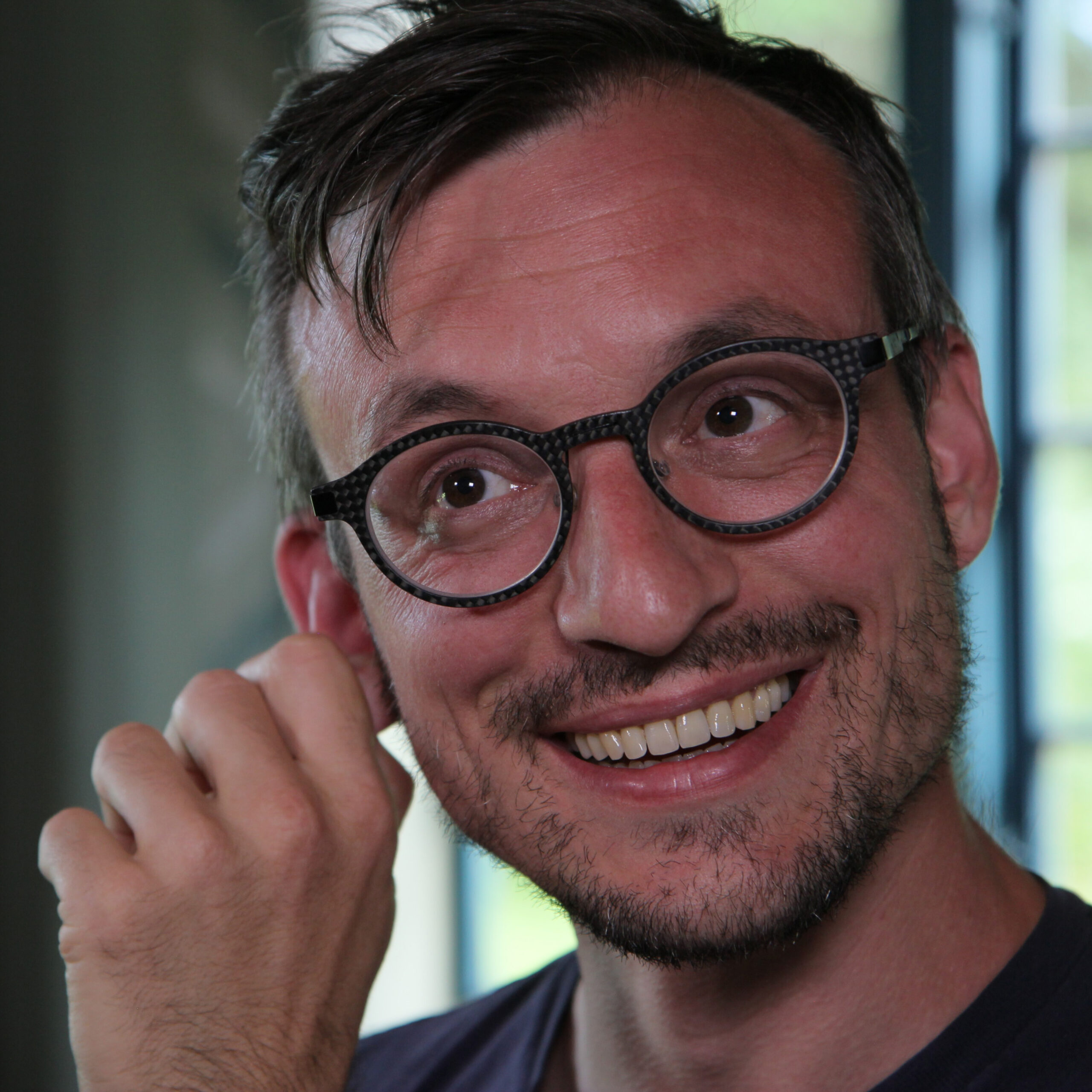
AI & Creativity – Martin Pichlmair: Creative Challenges in Artificial Intelligence
Recent years have shown incredible progress within the field of artificial intelligence. Especially the domain of machine learning has achieved a number of remarkable milestones. Computers suddenly can beat humans at Go, can create credible portraits of people who do not exist, and can appear sentient enough to seemingly hire a lawyer. What does this mean for art and creativity? How will a future look in which human creators work hand in hand with machines of loving grace? On this journey to new forms of creative expression, we will encounter ethical challenges and cross some legal minefields, to arrive at new perspectives on creativity.
45 min
Martin Pichlmair
Dr. Martin Pichlmair (AT/DK) is a researcher, game developer, entrepreneur, and former media artist. His main topics are the essence of play, the condition of humanity, and creative application of artificial intelligence. He is Associate Professor at ITU Copenhagen, co-founder of the Vienna-based indie games studio Broken Rules, and currently gearing up for a new […]
https://vertical-progress.net/
Deep Space 8K: Rashaad Newsome – Being
He lives and works between Brooklyn and Oakland and his work blends several practices, including collage, assemblage, sculpture, film, video, animation, photography, music, computer programming, software engineering, community organizing, and performance, to create a divergent field that rejects classification. He pulls from the world of advertising, the internet, art history, Black and Queer culture to product a counter-hegemonic work that walks between social practice, abstraction and intersectionality. Being (2022) is a nonbinary, non-race AI created by combining animation game engines, scripted responses, generative grammars and unique machine-learning models. It plays multiple roles, leading participatory workshops that teach decolonization, and in the evenings, it explores the evolution of vogue drawing parallels between dance and Black American Queer experience. More information: https://ars.electronica.art/planetb/en/animation-festival-deep-space/
30 min
Ars Electronica Center, Deep Space 8K
Rashaad Newsome
Rashaad Newsome (US) lives and works in Oakland, CA. Their work blends several practices, including collage, sculpture, film, video, animation, photography, music, software engineering, community organizing, and performance, to create a divergent field that rejects classification. Using the diasporic traditions of improvisation, he pulls from the world of advertising, the internet, Art History, and Black […]
https://rashaadnewsome.com/
Deep Space 8K: Martina Scarpelli – Egg, kai — a little too much, Cosmoetico
Italian filmmaker based in Denmark with studies in Milan, Turin, and a variety of residence experiences and distinctions. Works as an animation director, creative director and producer of provocative stories with sophisticated storytelling that can challenge yet inspire audiences of today. She likes working on projects that are sexy, funny, and a little rude and smart. Egg (2018) — An intimate story of a woman locked at home, attracted to and scared of an egg. She eats the egg, she repents, she kills it, letting it die of hunger, portraying a moment of shame, defeat, and yet of victory. kai — a little too much (2020) — In an imaginary space, a woman lets go of herself and overcomes the fear of her own greatness, discovering her body, embracing her emotions, and learning to own the parts that make her HER. Cosmoetico (2015) — A girl looks for answers to big questions regarding her role as a small part or creator of the cosmos; she reflects on the existence of reality and her relationship with it. More information: https://ars.electronica.art/planetb/en/animation-festival-deep-space/
30 min
Ars Electronica Center, Deep Space 8K
Martina Scarpelli
Martina Scarpelli (*1988, IT/DK) is an Italian director and producer based in Denmark, with a bachelor in Fine Art from “Academy of Brera” in Milano, and a bachelor in Animation from “Experimental Cinematography Center” in Turin. She works as animation director, creative director and most recently as a producer pushing for projects that are sexy, […]
https://martinascarpelli.com/Expanded Celebration – 10th anniversary party
Ars Electronica Sky Loft
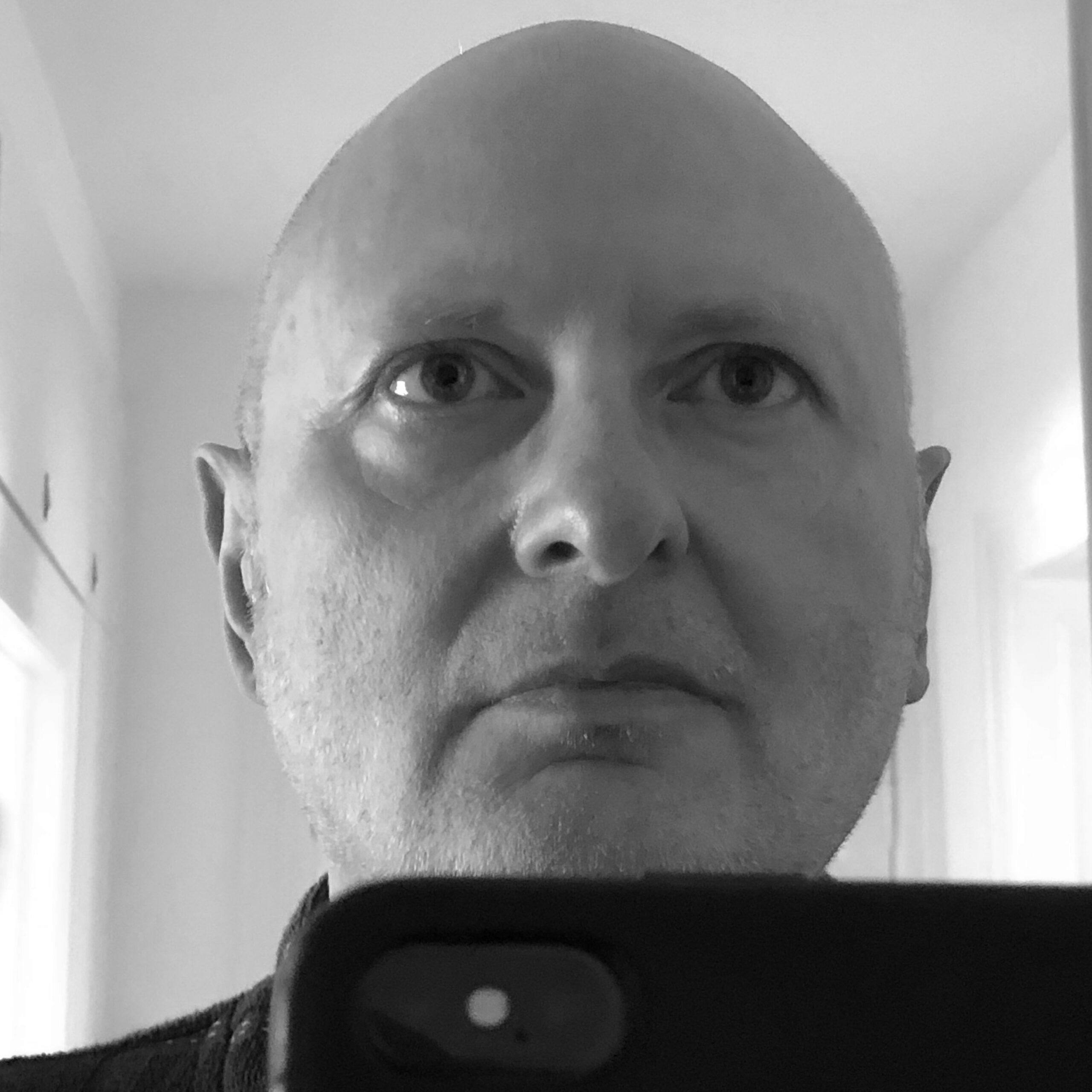
Expanded & Hybrid – Frank Geßner: EXPANDED ANIMATION WOR(L)DS: GLOBE PLAYHOUSE SPACELAB
Sergej Eisenstein’s fragments on the “spherical book” have served as one of the most important experimental examples of hypertextual worlds of thinking, ordering and writing of the 20th century. Inspired by these ideas, the spherical publication EXPANDED ANIMATION WOR(L)DS sees itself as a “kickoff“ for the interdisciplinary creative artistic and scientific actors network TESTELAB & GUESTS. Based on the symposium of the artistic research masterclass GLOBE PLAYHOUSE SPACELAB, the English-language desktop publishing project will be developed as a spherical, interdisciplinary “net within a net”, with linked scientific and artistic text-based contributions by international authors. The ongoing work began in 2021 and endeavors to integrate 96 texts by 2024. Similarly inspired by the concept of the “spherical form of time“ by the composer Bernd Alois Zimmermann, the overall aim of the project is to make “curated“ knowledge accessible online using the current possibilities of polymedia.
40 min
Frank Geßner
Frank Geßner (DE) was born in Würzburg, Germany. He is living and working as a free artist and professor in Berlin and Babelsberg. Studied sculpture, painting, aesthetics, and art history in Stuttgart and Berlin. Currently he is Professor for “Theory and Practice of Visual Art” at the Film University Babelsberg KONRAD WOLF. His artistic research […]
https://www.frankgessner.eu
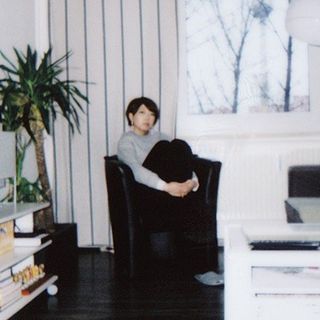
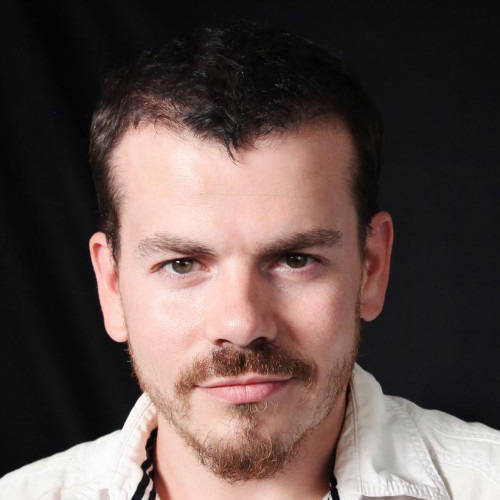

Prix Forum – Computer Animation
The Prix Ars Electronica is the world’s most time-honored media arts competition since 1987, and from its inception, it has kept working as a trend barometer that continues to change with the times. Along with the CyberArts exhibition, the Prix Forum is always one of highlights of the Ars Electronica Festival and a great opportunity to get to know the Prix Ars Electronica winning artists. Audiences can expect to learn more about what piques the artists’ curiosity, what issues or technologies they explore, and what creative processes shape their projects. As indicated by the title of the Jury Statement of Interactive Art + “Radical Consciousness,” many of the works in each category encourage the transformation of our consciousness through their social actions. We are used to ignoring or not paying much attention to matters such as sleep, bodily senses, ancestral knowledge, bacterial behavior, viewpoints of minorities, and government injustice — elements highlighted by the artists to build a new, radical consciousness. The Prix Forum will feature artist talks by this year’s top three Prix Ars Electronica winners as well as open discussions chaired by the category jury. The Visionary Pioneer of Media Art category will feature talks by Charles Armikhanian and by award winner Laurie Anderson. Panels featuring the categories Computer Animation, Interactive Art + and Digital Communities will be chaired by Isabelle Arvers, José-Carlos Mariátegui and Thomas Gegenhuber respectively. Detailed schedule: https://ars.electronica.art/planetb/de/prix-day/
60 min
KEPLER'S GARDENS, JKU Lecture Hall 1
Isabelle Arvers
Isabelle Arvers (FR) is a French artist and curator whose research focuses on the interaction between art and video games. For the past twenty years, she has been investigating the artistic, ethical, and critical implications of digital gaming. Her work explores the creative potential of hacking games through machinima and games as a new medium […]
https://www.isabellearvers.com/Yoriko Mizushiri
Yoriko Mizushiri (JP) (b. in 1984), is a freelance film director who graduated from the Joshibi University of Art and Design in Japan, where she created Shiri Play (2005), Kappo (2006), and Lena Lena (2009). Then she worked on her trilogy that focuses on the sense of touch: Futon (2012), Snow Hut (2013), and Veil […]
https://www.imoredy.com/Marc Hericher
Marc Hericher (FR) studied illustration and Fine Arts, and then animation at the Parisian ENSAD art school, with a marked taste for storytelling and video art. Since 2006, he works as an independent director or motion designer in the production of music videos, institutional films, documentaries, and personal films. Among his works, he directed the […]
http://marc-hericher.com/Rashaad Newsome
Rashaad Newsome (US) lives and works in Oakland, CA. Their work blends several practices, including collage, sculpture, film, video, animation, photography, music, software engineering, community organizing, and performance, to create a divergent field that rejects classification. Using the diasporic traditions of improvisation, he pulls from the world of advertising, the internet, Art History, and Black […]
https://rashaadnewsome.com/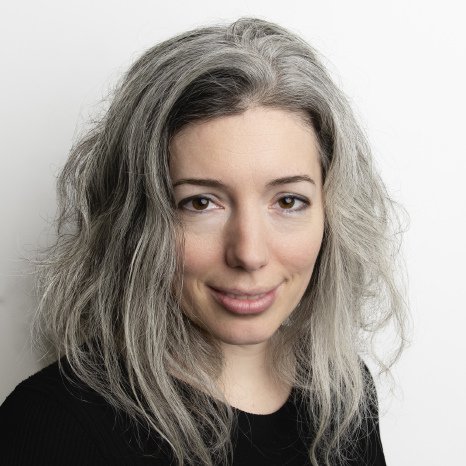
Expanded & Hybrid – Franziska Bruckner: Between the Frames: Expanding Stop-Motion for Virtual and Hybrid Environments
“What happens between each frame is much more important than what exists on each frame.” (Norman McLaren c.f. in Sifianos 1995: 62) But what happens if this “between” is connecting the real and the virtual world? The art-based research project VRinMotion investigates how characteristics of analogue stop-motion animation and data sets of motion-capturing can be adapted as an expanded animation concept in contemporary art discourse. Through the experimental combination with virtual reality, the project explores their potential beyond filmic boundaries. For this purpose, the project aims for an artistic expansion and hybridization of such techniques.The presentation will focus on the process and outcome of the project’s first artistic experiment, “Experimotion I”. In collaboration with the animation artist Max Hattler, the VRinMotion team created hybrid artistic tools and workflows in order to artistically discover, advance, and build innovative prospects for the integration of cut-out animation in hybrid and virtual environments. The talk will also discuss the collaborative art-based research process of the involved artists, technicians and theorists.
40 min
Franziska Bruckner
httphttFH. Prof. Dr. Franziska Bruckner (AT) is head of the Research Group Media Creation at St. Poelten University of Applied Sciences. She organizes the international symposium series Animafest Scanner and co-coordinates AG Animation of the German Society for Media Studies. Her education includes master-degrees at the University for Applied Arts Vienna and at the University […]
http://franziska-bruckner.com

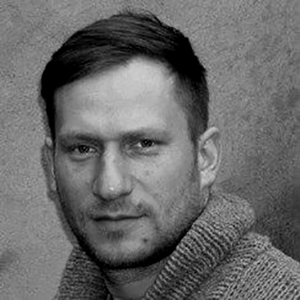
Deep Space 8K: Experimental Animation
Experimental and innovative forays into various forms of animation are on display here. In the first film The Crow (Glenn Marshall), artificial intelligence is used to transform a dancer into a crow. In the film Hysteresis (Oval — Markus Popp, Tsuki — Robert Seidel), projection mappings of analog drawings on a dancer interfere with machine-learning tools and digital processing. Anxious Body (Yoriko Mizushiri) offers a tactile experience. Every touch becomes an intense experience — a somatic empathy is triggered in the audience. The film Surge (Sebastian Buerkner) probes into the complexity of negotiating perception agreements based on a fictional postsurgical calibration session. Let yourself be taken on a journey into the world of current experimental animation.
Featuring:
The Crow, Glenn Marshall (UK) Hysteresis, Oval — Markus Popp (DE), Tsuki — Robert Seidel (DE/AU) Anxious Body, Yoriko Mizushiri (JP) Surge, Sebastian Buerkner (DE) More information: https://ars.electronica.art/planetb/en/animation-festival-deep-space/60 min
Ars Electronica Center, Deep Space 8K
Yoriko Mizushiri
Yoriko Mizushiri (JP) (b. in 1984), is a freelance film director who graduated from the Joshibi University of Art and Design in Japan, where she created Shiri Play (2005), Kappo (2006), and Lena Lena (2009). Then she worked on her trilogy that focuses on the sense of touch: Futon (2012), Snow Hut (2013), and Veil […]
https://www.imoredy.com/Robert Seidel
The works of Berlin-based artist Robert Seidel (*1977, DE) have been shown in numerous international festivals, as well as at galleries and museums such as the Palais des Beaux-Arts Lille, ZKM Karlsruhe, Art Center Nabi Seoul, Young Projects Los Angeles, Museum of Image and Sound São Paulo and MOCA Taipei. In his work ranging from […]
http://www.robertseidel.comSebastian Buerkner
Sebastian Buerkner (born 1975 in Berlin, DE) lives and works in London. He completed an MA at Chelsea College of Art & Design in 2002 and was awarded their Fellowship Residency 2003. Since 2004 Sebastian Buerkners art practice focuses on working in animation ranging from single films to multiple video installations. solo shows include Tramway, […]
http://www.sebastianbuerkner.com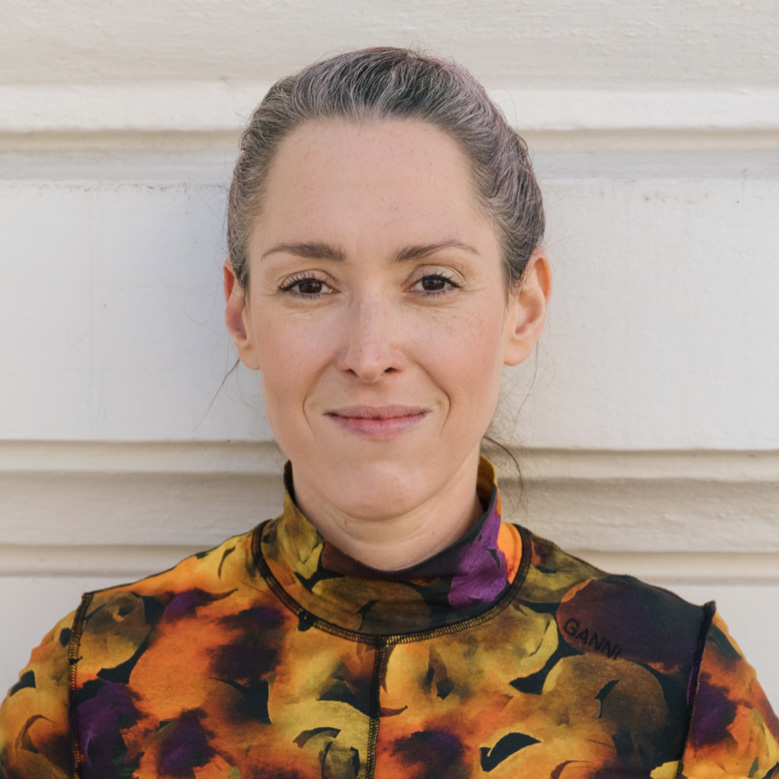
Expanded & Hybrid – Eva Fischer: CIVA – Phygital festival making
The first edition of the CIVA Festival took place in 2021 as a completely virtual and online festival. Over nine days, people could visit virtual exhibitions, take online tours, watch an online film programme together and participate in a streamed conference. We tried out numerous tools and thus also learned for the hybrid edition in 2022. By moving to the physical space, some virtual programming fell away, but the tools that worked best have remained. What does festival making mean in times of the phygital - living in both a physical and digital world?
40 min
Eva Fischer
Eva Fischer (AT) is an independent curator, cultural manager and lecturer in the field of experimental media, audiovisual and immersive art. She is the artistic director of the media art festival CIVA – Contemporary Immersive Virtual Art, that she initiated in 2021 together with a team of curators, designers and artists. In 2020, she co-founded […]
https://evafischer.org/about/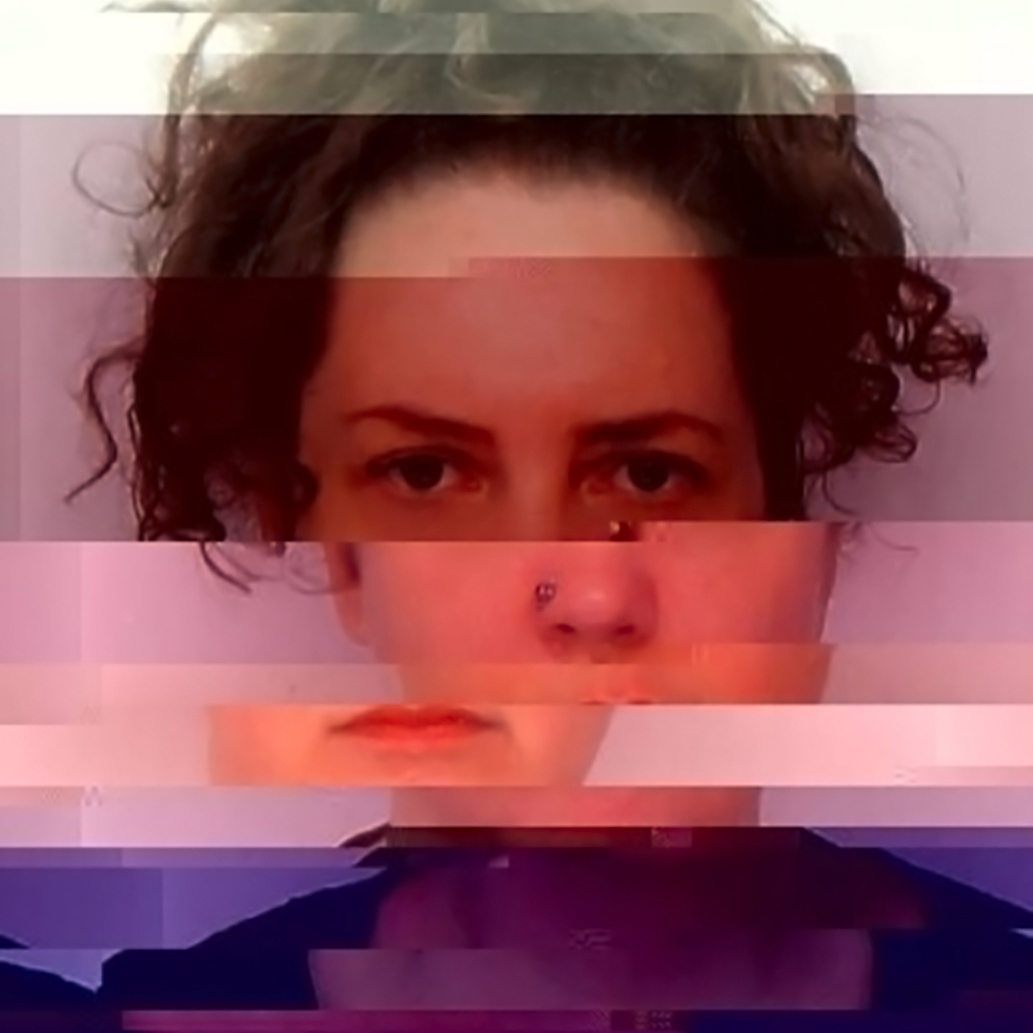

Synaesthetic Syntax – Welcome
Birgitta Hosea (SE/UK) and Juergen Hagler welcome you to this year's Synaesthetic Syntax.
5 min
Birgitta Hosea
Birgitta Hosea (SW/UK) is an artist, filmmaker, and researcher in expanded animation. Exhibitions include Venice & Karachi Biennales; Oaxaca & Chengdu Museums of Contemporary Art; InspiralLondon; Hanmi Gallery, Seoul. She has a solo exhibition at ASIFAKeil, Vienna in April 2020. Included in the Tate Britain and Centre d’Arte Contemporain, Paris, archives, she has been awarded […]
http://www.birgittahosea.co.uk/Juergen Hagler
Juergen Hagler (AT) studied art education, experimental visual design, and cultural studies at the University for Art and Design in Linz, Austria. He currently works as a professor of Computer Animation and Animation Studies in the Digital Media department at the Hagenberg Campus of the University of Applied Sciences Upper Austria. Since 2014 he a […]
https://research.fh-ooe.at/de/staff/215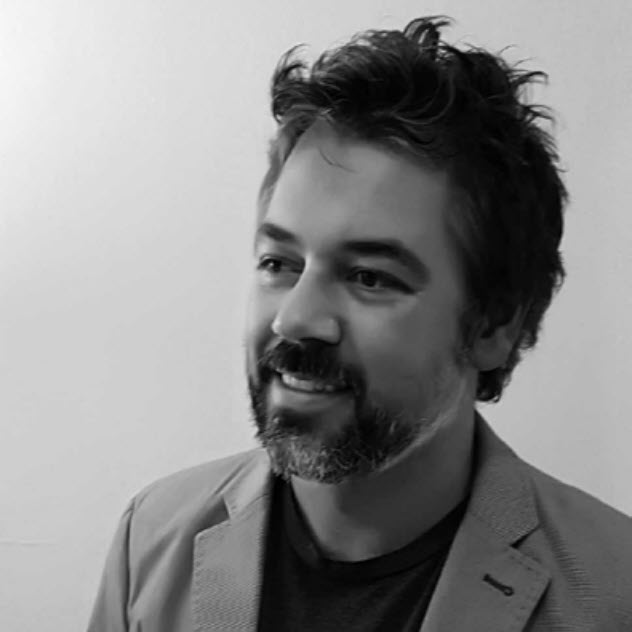
Synaesthetic Syntax – Sensate Sculpting – In Praise of The Hand in Digital Sculpting and 3D Modeling
The title of this paper is an adaptation of, and homage to Henri Focillon’s In Praise of Hands (1989), wherein the author explains that the hands of the artist are not the mind’s ‘docile slave’, but rather have a life of their own, a ‘sensate presence’ that foregrounds the hands within an epistemology of mind. The sensitivity and sensory ability of the hands working in conjunction with the physicality of the world makes them central in our tacit knowledge of objects. And yet the most advanced ‘object’ making interfaces developed by humans – computer graphics - have arrived only recently and imperfectly to the notion of the critical role of the hand and its knowledge through the development of gestural interfaces. A range of historical 3D modeling conventions have evolved in concert with the evolution of the technologies within which these practices take place, including modeling by defining surfaces as polygons, with vertex positions recorded in 3D coordinate space or modeling through the assembly of surfaces defined by mathematical curve functions (such as NURBS modeling). As described by Aylish Wood (2015), 3D modeling technologies require practitioners to integrate their behaviors with the operational logic of software. The structure of the software operations therefore structures the operations and behaviors of the artist. To execute a project successfully, we begin to unconsciously ‘meet the software half-way’, a process Heidegger referred to as ‘gestell’, or ‘enframing’ (Heidegger, 1954). Displacement sculpting and volumetric sculpting take a different approach to integrating user inputs into the logic structure of the software. Rather than applying careful selections and movements to model components, digital sculpture platforms allow artists to apply gesture based changes to the virtual object and in so doing, distinguish “digital craft from mere mechanical machine operation” (MacCullough, 1998). Tools for these digital sculpting practices enrich the veridical premise of digital objects in the moment of creation, presenting them as real, three-dimensional objects just beyond the screen. These software solutions allow the creator to express changes to the surface through gestural interfaces such as pen/tablet devices or VR input tracking. These gestural interfaces create the possibility for improvisation in 3D object production which is in contrast with the engineering approach typical to polygon and spline modeling. The current status of gestural interface and digital sculpting practice as the emerging standard for the creation of 3D models and digital objects provokes this critical analysis across the entire production chain; creator, tool relations, and object; issues for creators discussed include the industrial categorization of practitioners, their cognitive and physical orientations to these practices and the cultural contexts for creation. The paper includes the artists lamentations on the limitations of tactility, texture and depth, the problematic use of the digital as a proxy for the real and the perils of visual abstraction in this context. I provide analysis of virtual surfaces, which as well as their defining properties have specific behaviors, allowing us to subject digital materials to ergonomic assessment in the context of sculpture. The status of digital objects is considered from the perspective of ontology (after Hui, 2016) and philosophies of digital creation as epistemology. References Focillon, H. (1989). In praise of Hands. In The life of forms in art. Zone Books. Heidegger, M. (1954). The question concerning technology. Technology and Values: Essential Readings, 99–113. Hui, Y. (2016). On the existence of digital objects. University of Minnesota Press. MacCullough, M. (1998). Abstracting craft: The practiced digital hand (1. paperback ed). MIT Press. Wood, A. (2015). Software, animation and the moving image: What’s in the box? Palgrave Macmillan
30 min
Andy Buchanan
Dr Andy Buchanan (AU) is an independent artist and scholar, previously a professor of Computer Graphics Technology at Purdue University, specializing in digital animation production and animation theory. Buchanan is best known for his sculptural morphing animation installations. Research interests include digital metamorphosis, experimental digital animation techniques and digital sculpture. His work has been shown […]
http://andybuchanan.com.au/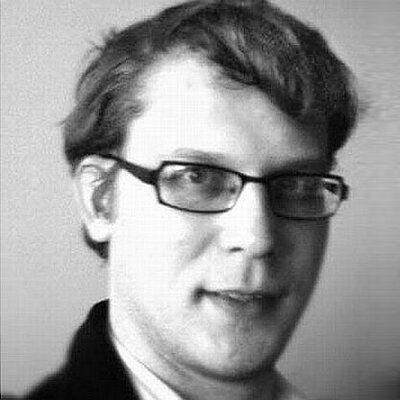
Synaesthetic Syntax – Investigations into gestural and touch interaction with anisotropic metaphors for audiovisual virtual instruments
Having a background in classical and digital audiovisual arts, since some time I have been interested in the potentials of anisotropic metaphors for 'audiovisual virtual instruments'. Anisotropy is a concept describing orientation and direction dependent properties of materials and space, used in physics, chemistry, cosmology and is used as a metaphor to develop derived metaphors for interfaces that can use (but also extend the limits of) Cartesian coordinate system. This presentation introduces main concepts and practical investigations using several input devices ranging from graphic tablets, ‘5D touch’ MIDI keyboard, VR controllers and motion-, brain bio-feedback sensors, integrated in spatial concepts of interface, usable in immersive media performance. I wanted to explore the capacities of combined control (audiovisual and haptic/gestural) as dynamic, multi-dimensional relationship models that can be experienced in spatial representation (stereoscopic image and multi-channel audio). This research aims to expand the range of interface implementations, offering expressivity dimensions from expert level of complex and subtle manipulations to first-time encounter and possible accommodation of ludic approach or even brutality. The work is situated in the cognate fields of Immersive Analytics (Skarbez, Polys, Ogle, North, Bowman, 2019) - integrating recent developments in visualization, auditory displays, computing and machine learning and neuroaesthetics. The work aims to build upon various initiatives of integration of audiovisual expressivity of such as ‘AVUI’ (Correia & Tanaka, 2021) and reflect on the meaning of gesture within concepts of ‘mediation of self’ (eg. Stiegler 2021) or within the social construct of ‘dispositif’ (Foucault 1977).
30 min
Jānis Garančs
Jānis Garančs (LV) is an artist and immersive media researcher. He has initial training in classical fine arts in Riga, further studies of video and computer art at the KKH, Stockholm, and digital audio-visual media at the KHM (Academy of Media Arts), Cologne. Since 2000 he works primarily with interactive multi-media installations and performances, focusing […]
https://garancs.net/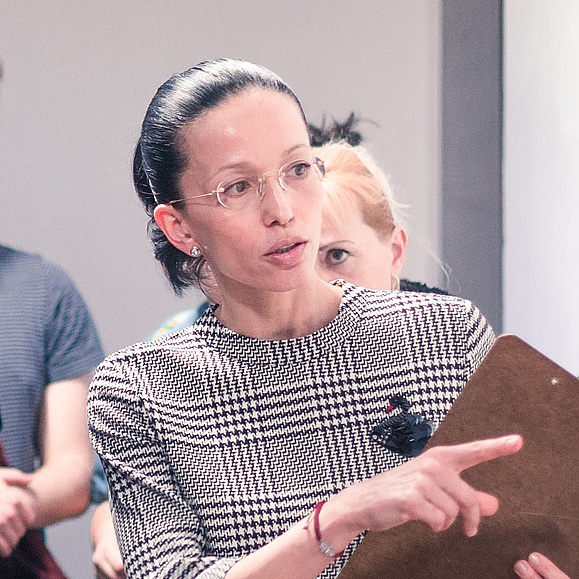
Synaesthetic Syntax – Searching for Gestures of Freedom and Intensities within Interactive Media Art
The paper will present The General Theory of Gestures (Flusser) as a productive theoretical framework for the analysis of new media art, which is defined as various scores and records of ephemeral, interactive events involving human and non-human actors (Latour). I propose to switch the focus of the debate on the new media art from the description of the technical parameters of the media to the performative qualities of the interactive media art, and thus towards to search for "movements" and "gestures" in the global man-machine network. Flusser’s categories for exploration of interactivity from the dualistic perspective of control vs. freedom will be combined with Bachelards’ aesthetic of elements, specifically poetics of water, which allow to think about interactivity through the category of "intensity" (Delleuze) as well. The aim of the paper is to show how the performative concept of interactive media art not only contributes to the refinement of the theoretical discourse that surrounds it, but as an effect it also leads to the search for more sustainable strategies for preserving media art as a part of the cultural heritage of 20th and 21st centuries. References: BACHELARD, Gaston. Water and Dreams. An Essay on the Imagination of Matter. Dallas: The Pegasus Foundation, 1983. FLUSSER, Vilém; BEC, Louis. Vampyroteuthis Infernalis. A Treatise, with a Report by the Institut Scientifique de Recherche Paranaturaliste. Minneapolis: University of Minnesota Press, 2012. FLUSSER, Vilém. Towards a General Theory of Gestures. In: Gestures. University of Minnesota Press, 2014. LATOUR, Bruno: We Have Never Been Modern. Cambridge, Mass.: Harvard University Press, 1991.
30 min
Jana Horáková
Jana Horáková (CZ) is an associate professor for New Media Art at the Department of Musicology of the Masaryk University, Faculty of Arts, Czech Republic. She specializes in a local new media art history, in robotic art, and in innovative methodologies of new media art research, preservation, and mediation. She presented her research in an […]
https://www.muni.cz/en/people/14870-jana-horakova15:35
Break
A short break between the Synaesthetic Syntax sessions.
15 min
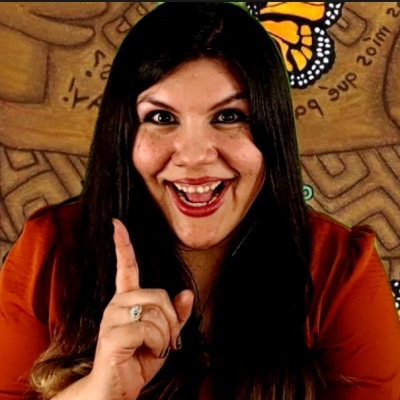
Synaesthetic Syntax – Before the Sixth Sun: A codex for our children
To showcase the forces of coloniality and the decolonial aestheSis (Walter Mignolo), or the processes of thinking and doing, of sensing and existing beyond the impositions and absurdity of coloniality, I am preparing a children's book with audio, tactile, and AR components that will tell the story of invasion, injustices, and issues of American Indigenous land stewardship through the perspective of native and settler plants. The book produced in fabric, crochet, and embroidery using cotton, wool, burlap, acrylic, and silk is titled, Before the Sixth Sun: A Codex for Children. This piece of hyper design mixes folk with technology exposing the artisan’s hand as a counter-story to mass production and capitalism in the uniqueness of presence, making the moment and the event more valuable than the object, and bringing materiality back to its connection to ritual and meaning. This work in progress is scheduled to be part of the Mexicali Biennial exhibition The Land of Milk and Honey opening at the Cheech Marin Center for Chicano Art & Culture of the Riverside Art Museum in late January 2023 and will be included in the U.S. Library of Congress Mexicali Biennial archive and catalog. As is with textile tradition and transfronteriza knowledge production, this creates an opportunity for a non-linear morphing genealogy of presentations of fragmentary versions of this piece, because the way the piece is exhibited will continue to change as it is embroidered and being completed (always in a non-linear way). Furthermore, the textile on burlap represents the bounty of Indigenous and femenine forms of data storage and storytelling, alluding to the presence of “hidden” elements found in the augmented reality portion. Here, direct and unfiltered decolonial roots are not shared “underground” but through an invisible wireless technology around everyone. The digital element makes it possible to universalize the function of Chicano and Indigenous pedagogies of the home (Delgado Bernal 2001) as futuristic, “the communication, practices and learning that occur in the home and community...and serve as a cultural knowledge base that helps Chicanas... negotiate the daily experiences of sexist, racist, and classist microaggressions'' (p. 624) This represents the overlapping versions of history I received while I was a child at home, recreating the dissonance I experienced as a Kumeyaay descendant while receiving the legitimized version at school while dressed as a pilgrim and singing about giving thanks. Artisan textile AR animation recreates the sensing of the embodied POC experience in receiving overlapping oral histories in constant movement and the dissonance from receiving a static legitimized version of history. A written part will be presented under each textile page, as well as an audio component, and a tactile 3-D printed version of the text to enhance the sensory experience and accessibility to the artist's hand, especially to the deaf and blind. The final version of the codex will come with an accompanying subtitled video walkthrough and reading of the book with sound effects and Aztec music composed with Indigenous Mexican instruments courtesy of Mexican/Cuban ethnomusicologist and preservationist, Juan Carlos Portillo.
30 min
Liliana Conlisk Gallegos
With the goal of advancing the certain decolonial turn, Dr. Machete’s (Liliana Conlisk Gallegos (US)) live, interactive media art production and border rasquache new media art pieces and performances generate culturally specific, collective, technocultural creative spaces of production that reconnect Chicana/o/x Mestiza Indigenous wisdom/conocimiento to their ongoing technological and scientific contributions, still “overlooked” through the […]
https://transborderscapes.academic.csusb.edu/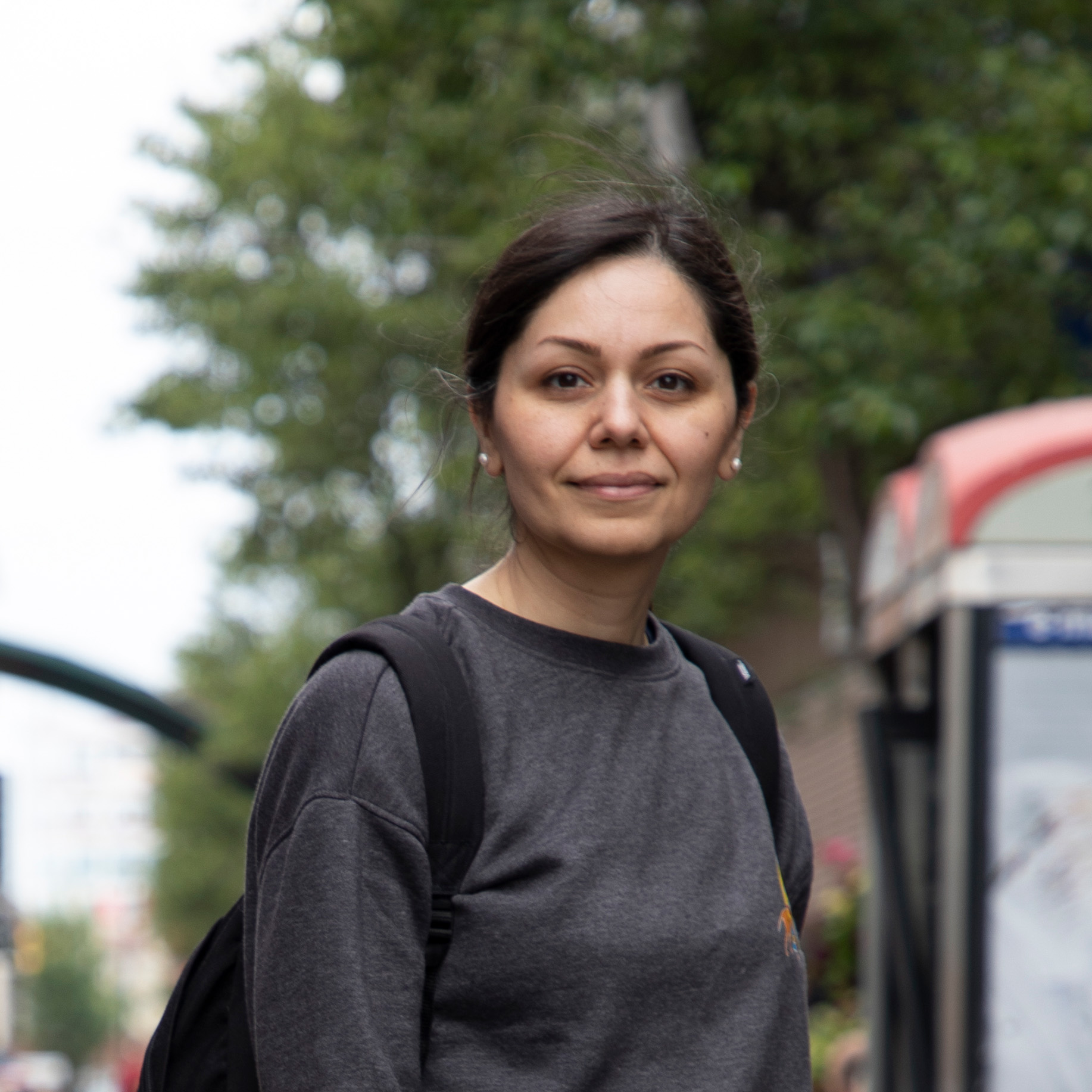
Synaesthetic Syntax – From Screen to Space: The Haptic Experience of Exhibited Animation
Wes Anderson’s animations are populated with rough and bold textures. The textures are even more highlighted through the mediation of the camera and animators. The close-ups, the left to right and top to bottom puppets and camera movements simulating caress, the flat images with deep focus and shallow depth of field and the perceivable traces animators left on the puppets-the fur and different types of fabric and textiles-as a result of touching them constantly between the frames, cause the images to be haptic. However, the settings and puppets have been displayed in the physical spaces. For instance, in 2018, the settings and puppets of Isle of Dogs (2018) were displayed at Store X in London, and Mr Fox’s museum office is exhibited at Roald Dahl’s museum. In these exhibitions, viewers have an unmediated haptic experience, even though they cannot touch them due to being rare objects. Also, camera and animators as the primary sources for simulating cutaneous and kinesthesis sensations are deducted from the work in such exhibitions and cause miniature puppets and settings to remain motionless. This presentation discusses such exhibitions as expanded animations, which provide a different haptic experience than the on-screen animation for the visitors by comparing the two modes. It also explains how haptic perception bridges the screen and the physical space. In doing so, this presentation will refer to the attractive characteristics of miniatures as inherently haptic works, the physical 3-D space of exhibitions, and the visitors’ proprioception in perceiving the puppets and the settings, combined with the memories and experiences of both on-screen animations and the real life. The following resources inform this presentation: Laura Marks’ The skin of the film (2000) and her specific definition of “miniaturism”, Jenifer Barker’s The Tactile Eye (2009) and Gaston Bachelard’s The Poetics of Space (1964). References: Barker, J., 2009. The Tactile Eye, Touch and the Cinematic Experience. Berkeley: University of California Press. Marks, L., 2000. The Skin of the Film, Intercultural Cinema, Embodiment, and the Senses. Durham and London: Duke University Press. Bachelard, G., 1964. The Poetics of Space. Translated from French by M. Jolas. Boston: Beacon Press.
30 min
Farzaneh Yazdandoost
Farzaneh Yazdandoost (UK) is a PhD candidate in film and media at Cambridge school of creative industries, ARU. She conducts her research on the specificity of puppet animation and photographic reality in Wes Anderson’s Fantastic Mr. Fox. She has been organizing ‘PhD Animation Research’ Seminars at the faculty of art, Humanity, and Social Science, ARU […]
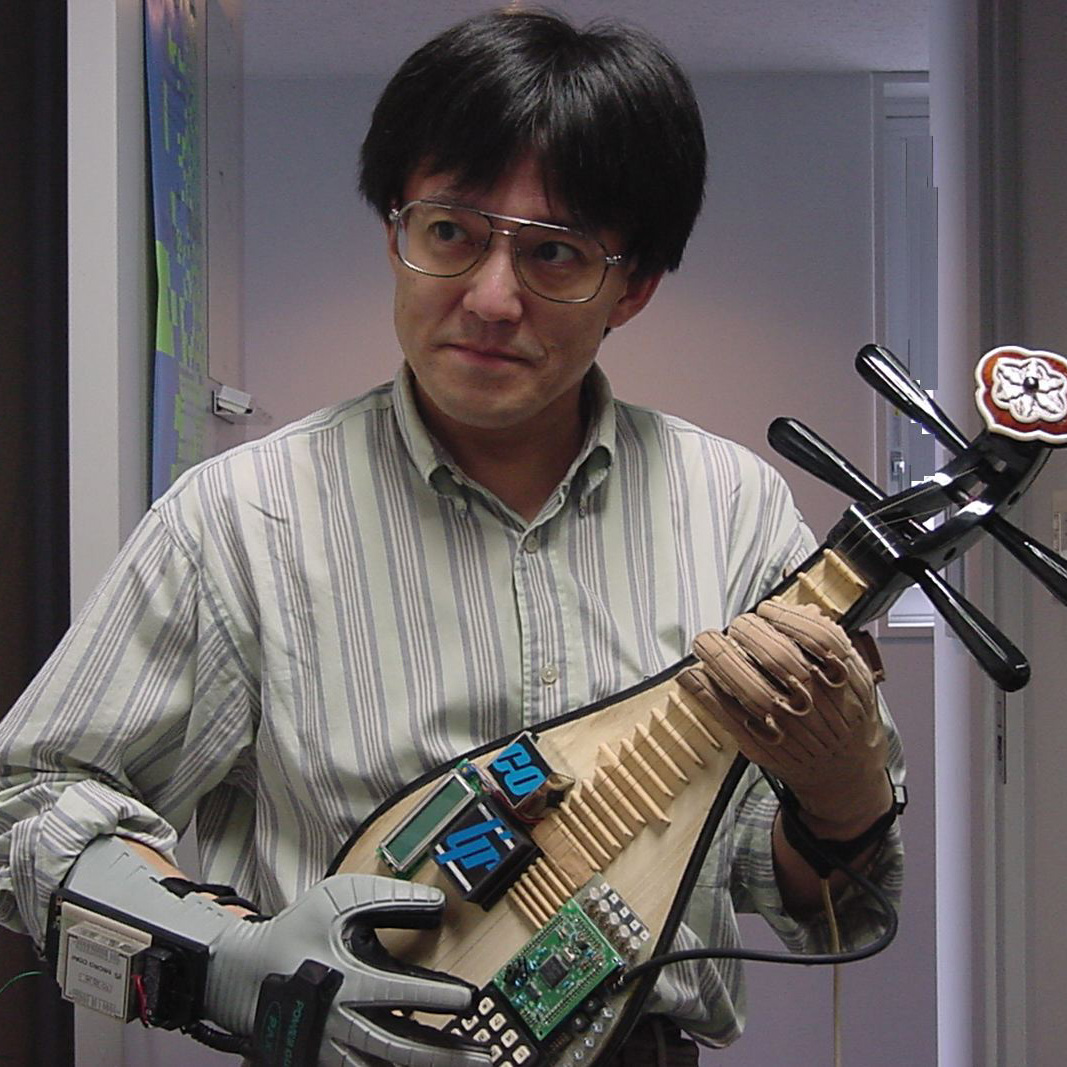
Synaesthetic Syntax – Interactive Multimedia Generated by Rubbing/Tactile Interfaces – Biofeedback Effects for Wellness Entertainment
This research aims the Wellness Entertainment with biofeedback especially tactile interfaces. A Japanese company "RT" developed the small "PAW sensor" which is covered with Urethane Foam and detects four individual values of rubbing controls by fingers optically, and reacts natural elastic repulsions. I have developed four generations system with this unique sensor, and I will report and discuss the possibility of human tactile interaction with a point of view of wellness entertainment. As is well known, there are so many sensors/interfaces are used in the interactive systems, however, almost these interfaces miss the soft feel and sensation of gentle manipulation. The pressure sensor or strain gauge detects the "maximum" value like a physical fitness test. Of course the "CV" sensors have no physical reaction because they are separated with people. I developed a new musical instrument called "Multi Rubbing Tactile Instrument". This had ten sensors on "Egg" shaped acrylic sphere to be held in both hands. All PAW sensor information were continuous value, so the were converted to the parameters for realtime "voice-like" generating system (like the meow of a cat or similar animal). Corresponding to the abstract nature of the auditory output of the system, I employed an algorithm that generated fractal images in real time, drawing beautiful two-dimensional fractal images in grayscale for each of the two modes, and changing their state in real time in response to 32-channel parameters coming from the sensor. The demonstrations as an interactive installation work were surprisingly well received. I had two chances of demonstration: "Sketching" conference in Arizona and Science Museum in Singapore. The researchers/engineers and children began their experience by touching this unknown toy with trepidation at first. To my surprise, I discovered that they all "smiled" without realizing it as they enjoyed the strange world of sounds and animations generated and the sensation of their fingers being gently returned to them. This experience led me to to develop a new 8-channel tactile sensor "PAW-eight" with my collaborator, a rehabilitation specialist. This system has eight PAW sensor for both hands to wrap up, total 32 channels information reach the system. From the beginning, the objective of this system was set as "MCI prevention" (activating the brain through the sense of touch at the fingertips in conjunction with hearing and vision). This system is as a "Serious Game", people must keep all eight fingers pushing PAW sensor with the "half" level and softly (4 channel signals will be almost equal) to move the 3D pointer into the "black hall" in the center of the space. The pitch of sound become low when the pointer is inside of the "black whole", so the aim of the game is to make the space will be silent with gentle control of all eight fingers. Care and rehabilitation professionals have evaluated the system and found it to be effective in leading to "wellness". I would like to pursue multimedia that effectively stimulates the emotions of touch and wellness.
30 min
Yoichi Nagashima
Yoichi Nagashima (JP), composer/researcher/PE/PhD, was born in 1958 in Japan. He played many instruments, conducted Kyoto University Choir and composed over 100 choral music. At Kawai Musical Instruments, he developed/designed/produced sound generator LSIs, electronic musical instruments and musical softwares. From 1991, He has been the director of “Art & Science Laboratory” in Japan Hamamatsu, produces […]
https://nagasm.org/ASL/index.html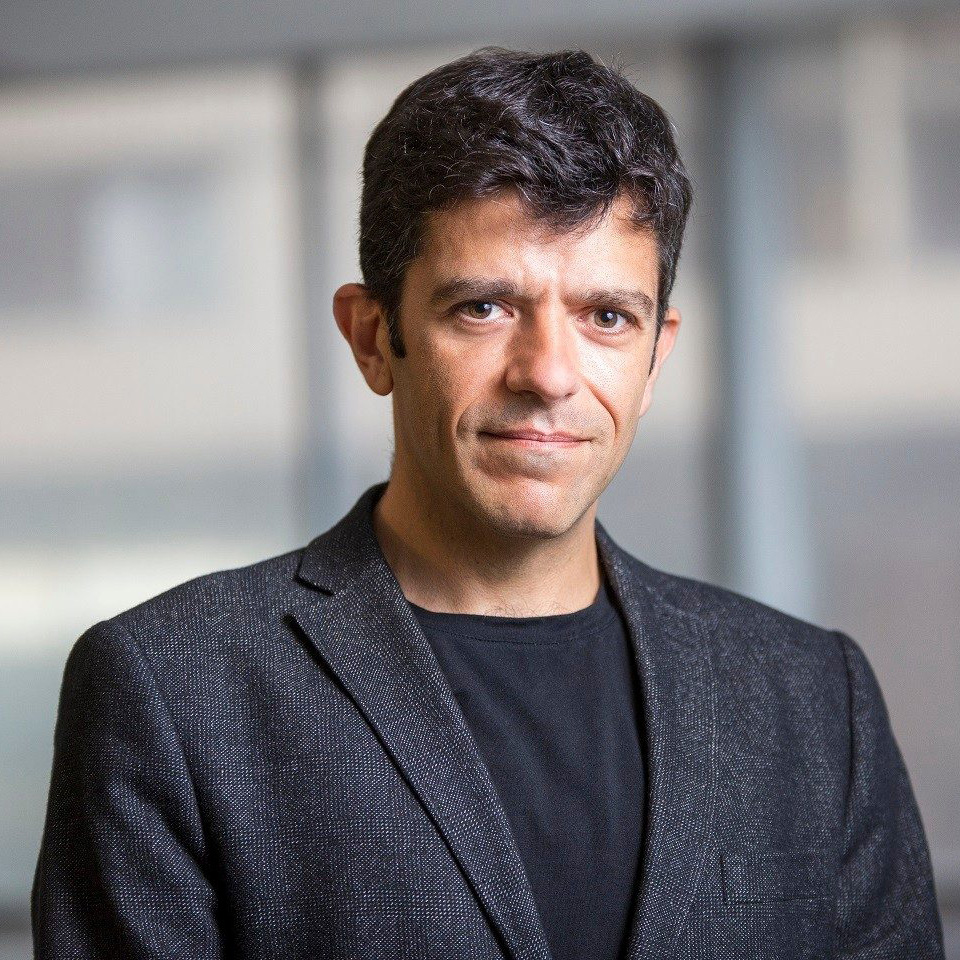
Synaesthetic Syntax – Visualizing the city in handmade film animation: cycles of bodily sensing and perceiving
Today, technological advances in audiovisual media are largely driven by a quest to accurately represent reality, a race toward the finito, a finite end, which should see representation and reality coincide. Commercial and utilitarian Film Animation can serve as a paradigm of this purposing of computer technology, with its wide use of CGI for creating photorealistic images and movement. Parallel to the “perfect” three-dimensional deception these virtual images offer, the real built environment of cities is also emulating computer generated imagery – often created in similar software and presented as animation – parametric design being a case in point, whereby a “perfect” end-product is dictated by computer algorithms. This modern-day obsession with machine precision that renders obsolete any technology it supersedes has no room for the unfinished, the decayed, and the slow, neither in processes of making nor in the spaces people inhabit. With the premise that these undervalued qualities are essential to the lived experience of the body, employing traditional techniques in both Film Animation and Architecture that involve bodily ways may not be an act of regression but a revisiting of an unfinished business: that of reinstating the human body in both the built environment and its visualizations. My artistic practice consists of film-animated works that reveal the human imprint which makes buildings living and meaningful objects that evolve ad infinitum. These works also reveal the human imprint of the animation and its “imperfections”. My presentation will highlight two ongoing research-creation projects that are part of the Explorations in Sensory Design research programme, directed by Dr. David Howes of Concordia University and supported by the Social Sciences and Humanities Research Council of Canada. The first is an exploration of Montreal’s Urban Parks and their transformation during the time of pandemic restrictions; a transfer of personal sensory experiences and observed collective movements into drawn and handcrafted animation. The second is a speculation on the regulated sensorial environment of the Mall space and its future within the organic forces of the surrounding city, a contrast expressed by the varying degrees with which the computer is employed in generating the animated image. References Barker, J. M. (2009). The tactile eye: touch and the cinematic experience. Berkeley, CA: University of California Press. Classen, C. (2017). The museum of the senses: experiencing art and collections. New York, NY: Bloomsbury. Hosea, B. (2019). Made by hand. In W. P. Ruddell Caroline (Ed.), The crafty animator. Switzerland: Palgrave Macmillan. Marks, L. U. (2000). The skin of the film: intercultural cinema, embodiment, and the senses. Durham, NC: Duke University Press. Pallasmaa, J. (2009). The thinking hand: existential and embodied wisdom in architecture. Chichester, U.K.: Wiley. Parks, C. F. a. (2016). Fluid frames. London: CRC Press Taylor & Francis Group.
30 min
Aristofanis Soulikias
Aristofanis Soulikias (CA) is an architect and film animator. He is a PhD student at Concordia University, Montreal, in the Individualized Program (INDI), under the supervision of Dr. Carmela Cucuzzella, Dr. David Howes, and Prof. Luigi Allemano, pursuing an interdisciplinary research-creation study with the title: Sensing the city: revealing urban realities and potentials through handmade […]
https://aristofanissoulikias.wordpress.com/

Synaesthetic Syntax – Closing Note
Birgitta Hosea (SE/UK) and Juergen Hagler (AT) conclude this year's Synaesthetic Syntax and Expanded Animation in a short closing note.
10 min
Birgitta Hosea
Birgitta Hosea (SW/UK) is an artist, filmmaker, and researcher in expanded animation. Exhibitions include Venice & Karachi Biennales; Oaxaca & Chengdu Museums of Contemporary Art; InspiralLondon; Hanmi Gallery, Seoul. She has a solo exhibition at ASIFAKeil, Vienna in April 2020. Included in the Tate Britain and Centre d’Arte Contemporain, Paris, archives, she has been awarded […]
http://www.birgittahosea.co.uk/Juergen Hagler
Juergen Hagler (AT) studied art education, experimental visual design, and cultural studies at the University for Art and Design in Linz, Austria. He currently works as a professor of Computer Animation and Animation Studies in the Digital Media department at the Hagenberg Campus of the University of Applied Sciences Upper Austria. Since 2014 he a […]
https://research.fh-ooe.at/de/staff/215LIVE
Visit the Expanded Animation YouTube channel to see current and past content.
SYNAESTHETIC SYNTAX

Synaesthetic Syntax: Gestures of Resistance
Symposium details: Sunday 11th September 2022, Ars Electronica Center, Linz, Austria.
Synaesthetic Syntax is part of the Expanded Animation events at the Ars Electronica Festival. This one-day symposium explores the complex relationship between sensory perception and expanded animation. In focussing on the primacy of the senses, the symposium aims to ask questions about the seduction of technology and how to maintain a discourse of what is fundamental about being human. This year’s theme is touch, gesture and physical movement. The symposium will take place in Linz and in-person attendance is preferred. All selected speakers will be given a free pass to the 2022 Ars Electronica Festival.
To be human, to be in a body, is to move and to feel; to move as it feels and to feel itself moving. However, bodies do not exist in isolation. Bodies collide with one another in social contexts. They have the power to affect others or to be affected themselves. Bodies are structured by culture, but they can also resist. Motion and sensation felt in the body lead to change.
At the time of writing, a line of tanks, armored vehicles and troops 40 miles long approaches Kyiv, literally illustrating change in motion through technology. How can animation respond to this? How might technologies of gesture, proprioception and motion be used to create animation that goes beyond formalism and is able to reflect upon the forces that seek to contain movements towards change?
The sensation of touch can be brutal and violent or tender and loving. Through ‘haptic visuality’, a sense of touch can be evoked in animation by triggering physical memories of smell, touch and taste that engage the viewer bodily to convey cultural experience rather than through use of language. How can touch be used in animation to create community or share memories?
List of Topics
Some of the questions we invite you to consider:
- How to critically reflect on the tools and technologies of touch and movement used to create animation – motion capture, tablets and pens, sensors – and the data sets and libraries that they create?
- How might the capture of motion, gesture and proprioception be used to innovate and tell stories of new communities?
- What is the role of touch in conveying memory?
- How might touch and biofeedback data be used in new ways to create animation?
Program
You can find the schedule for Synaeathetic Syntax under Program. Switch to 11/09/22 for the exact times.
Committees
The symposium is jointly organized by Dr. Juergen Hagler, Ars Electronica, University of Applied Sciences Upper Austria, Hagenberg and Professor Dr. Birgitta Hosea, Animation Research Centre, University for the Creative Arts, Farnham, UK.
Scientific committee: Professor Rose Bond, PNCA, USA; Associate Professor Max Hattler, School of Creative Media, CityU, Hong KongSchool of Creative Media, CityU, Hong Kong.
Venue
The conference will be held at the Ars Electronica Centre as part of the Ars Electronica Festival in Linz, Austria. The media festival will take place on the 7th–11th of September 2022: https://ars.electronica.art/festival/en/.
Contact
All questions about submissions should be emailed to animationresearch@uca.ac.uk.
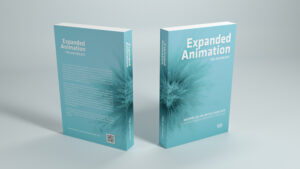
Expanded Animation – Mapping and Unlimited Landscape
The symposium Expanded Animation began in 2013 and offered a first approach to the expanding field of computer animation. It has since become an established part of the Ars Electronica Animation Festival and the international competition Prix Ars Electronica Computer Animation. Every year under an overarching theme, the symposium has researched the field of technology, art, animation, and aesthetics, investigated the collapsing boundaries in digital animation, and explored positions and future trends. As with the first conferences on computer animation at Ars Electronica in the 1980s, practice and theory are equally important. The richly illustrated publication Expanded Animation: Mapping an Unlimited Landscape features contributions from speakers and artists from the past six years and presents an overview of the prize winners in prix category Computer Animation from 2011 to 2018.
250 pages, 250 Illustrations
GALLERY
Impressions from past Expanded Animation symposia.
PARTNERS & CREDITS
Organization
Expanded Animation is brought to you by a group of dedicated people from the University of Applied Sciences Upper Austria, Hagenberg Campus (FH OÖ), and the University for the Creative Arts, Farnham, UK (UCA).
Conference Organizers (FH OÖ)
Jeremiah Diephuis
Juergen Hagler
Wolfgang Hochleitner
Michael Lankes
Patrick Proier
Huoston Rodrigues
Christoph Schaufler
Alexander Wilhelm
Conference Organizers (UCA)
Birgitta Hosea
Team (FH OÖ)
Axel Bauer | Production Director
Selina Behrens | Graphics, Studio Engineering
Laura Edl | Associate Director, Trailer
Elias Engel | Audio, Associate Director
Veronika Frei | Photo Documentation, Social Media
River Gadermaier | Associate Director
Nils Gallist | Social Media
Samuel Hackl | Camera, Production Director
Sarah Haim | Associate Director, Camera, Studio Engineering
Cedric Hansalek | Studio Engineering, Teaser, Video Documentation
Josef Ibrahim | Associate Director, Social Media
Mario Kassin | Camera, Photo Documentation, Teaser, Trailer
Kevin La | Associate Director, Graphics, Web
Daniel Leichinger | Production Director
Selina Mensah | Camera, Social Media, Studio Engineering
Tobias Pfeil | Audio
Lilith-Isa Samer | Audio, Social Media
Anton Schneeberger | Graphics
Jessica Studwell | Video Documentation
Elias Wolschlager | Web
Jennifer Ye | Graphics, Web

